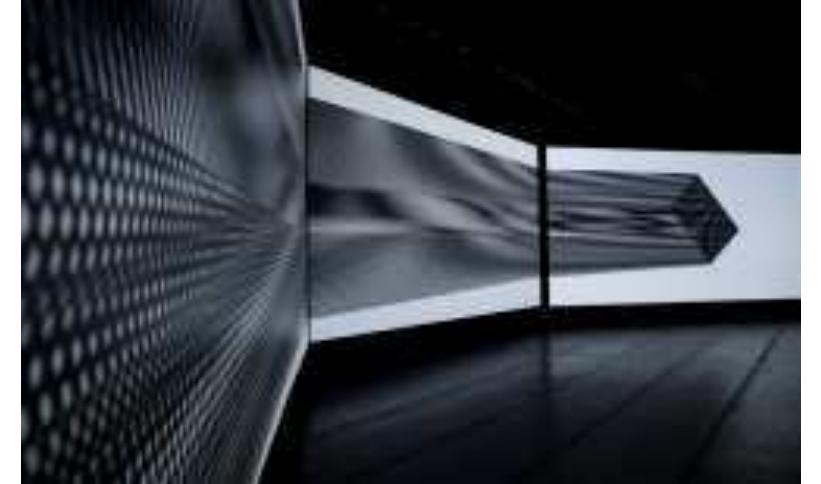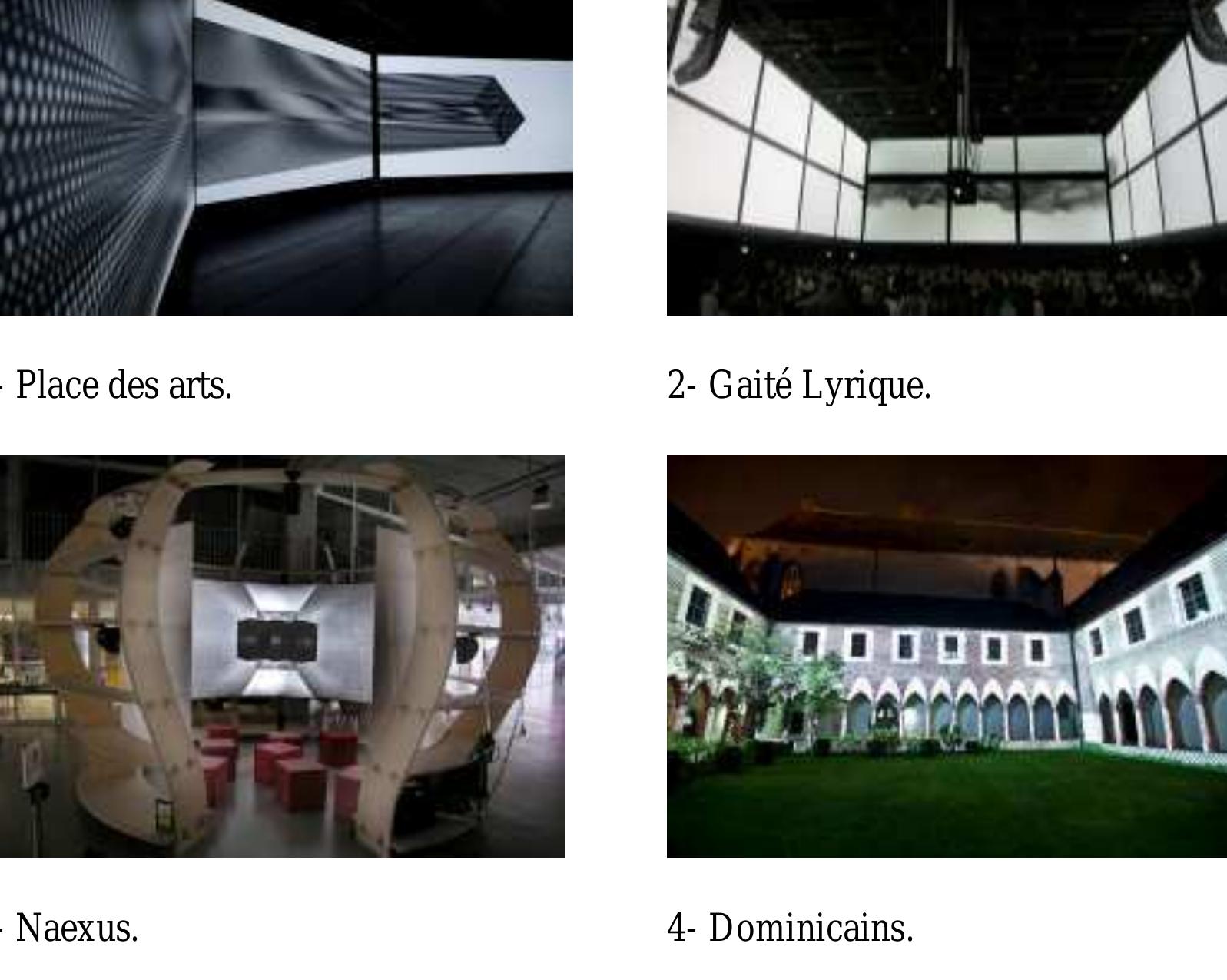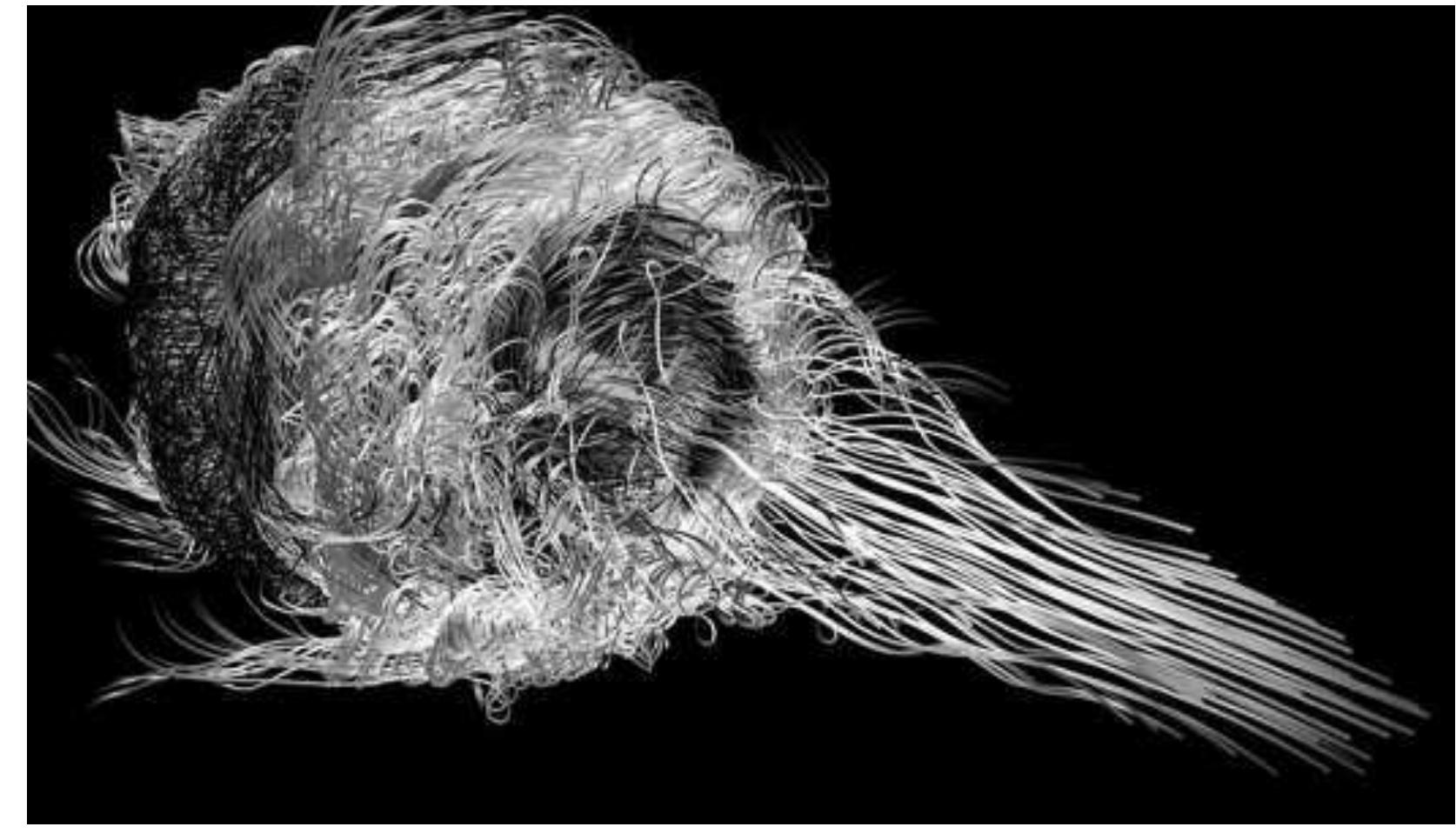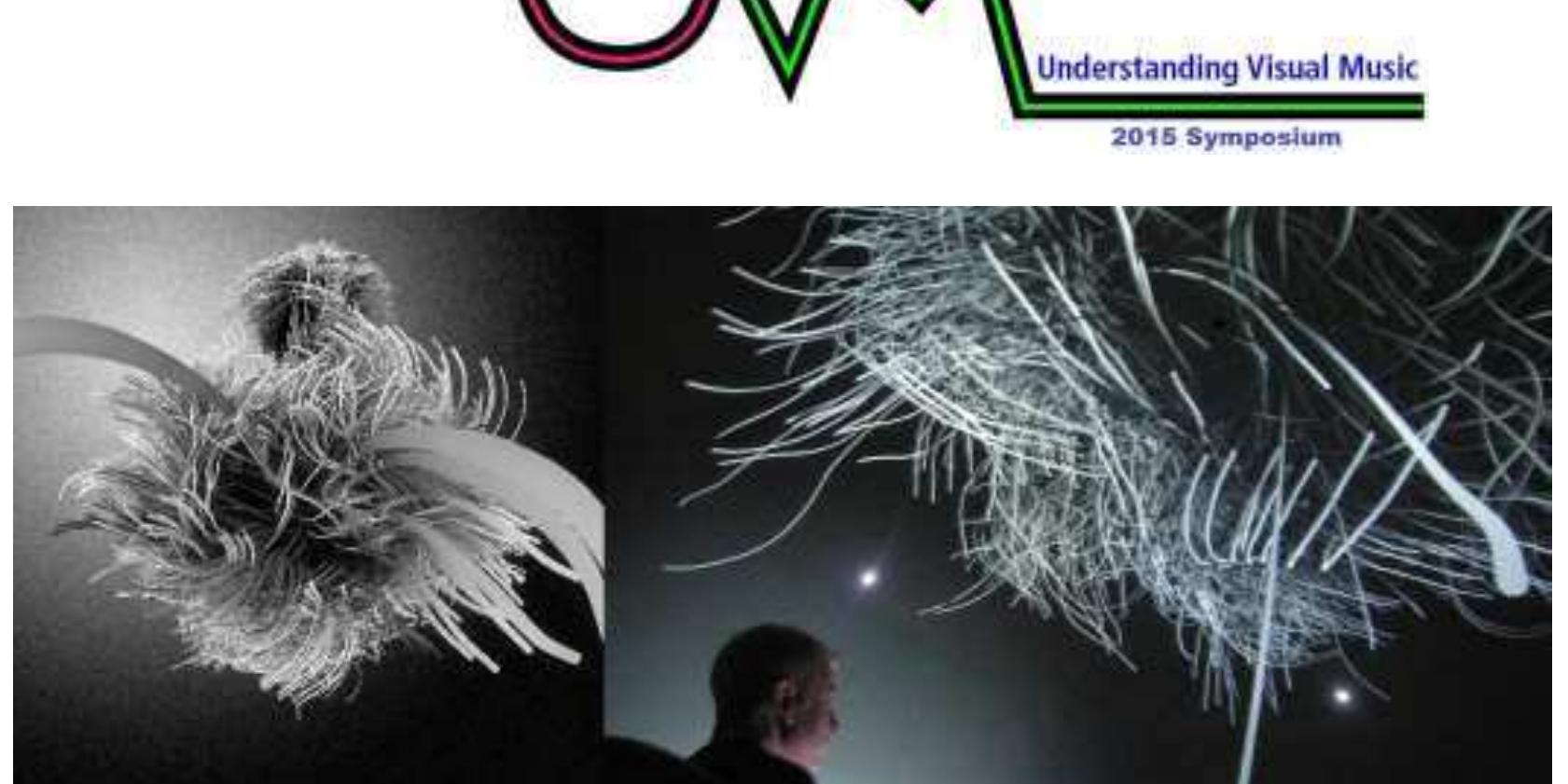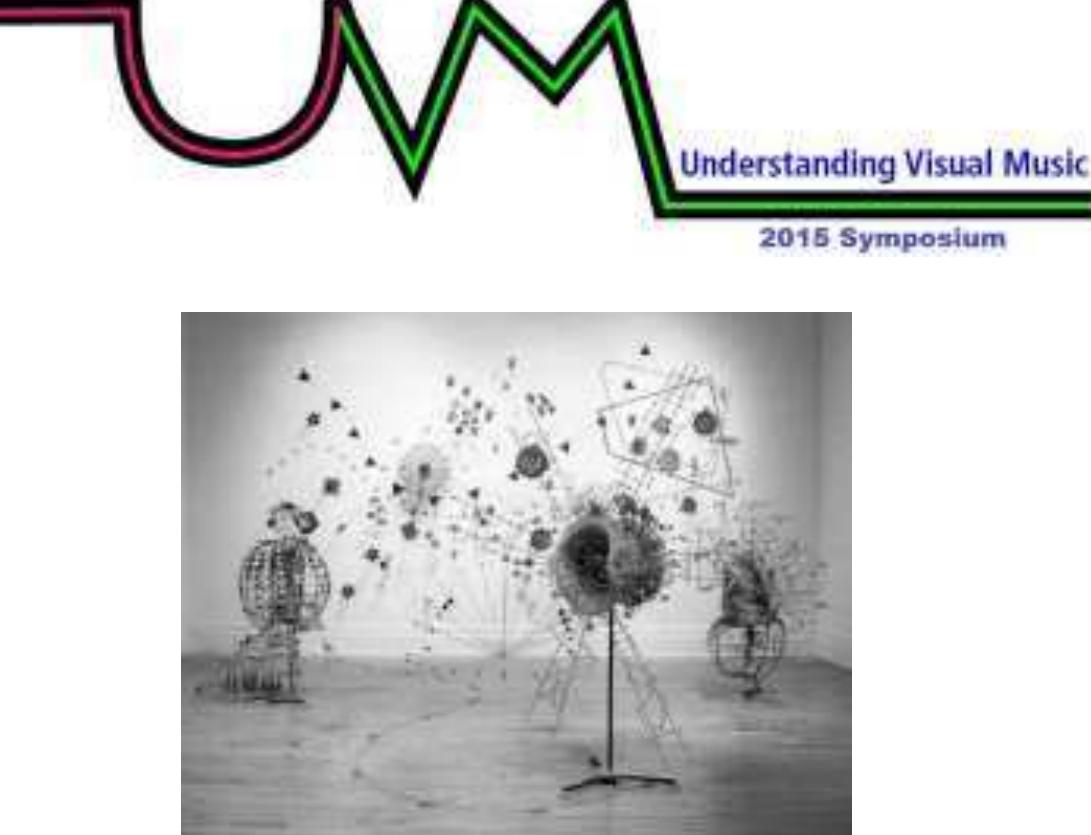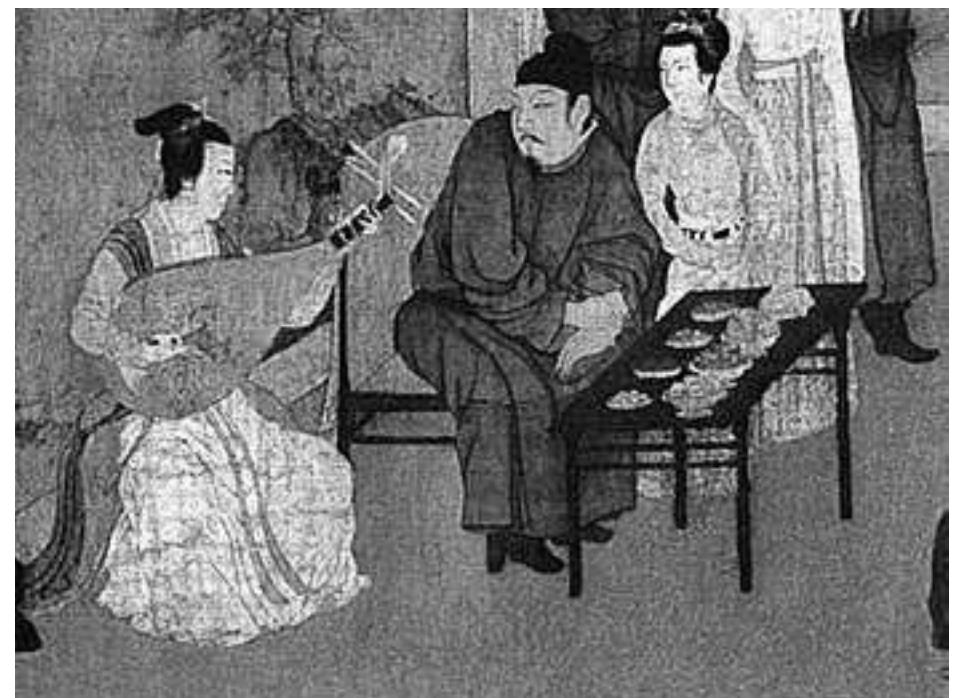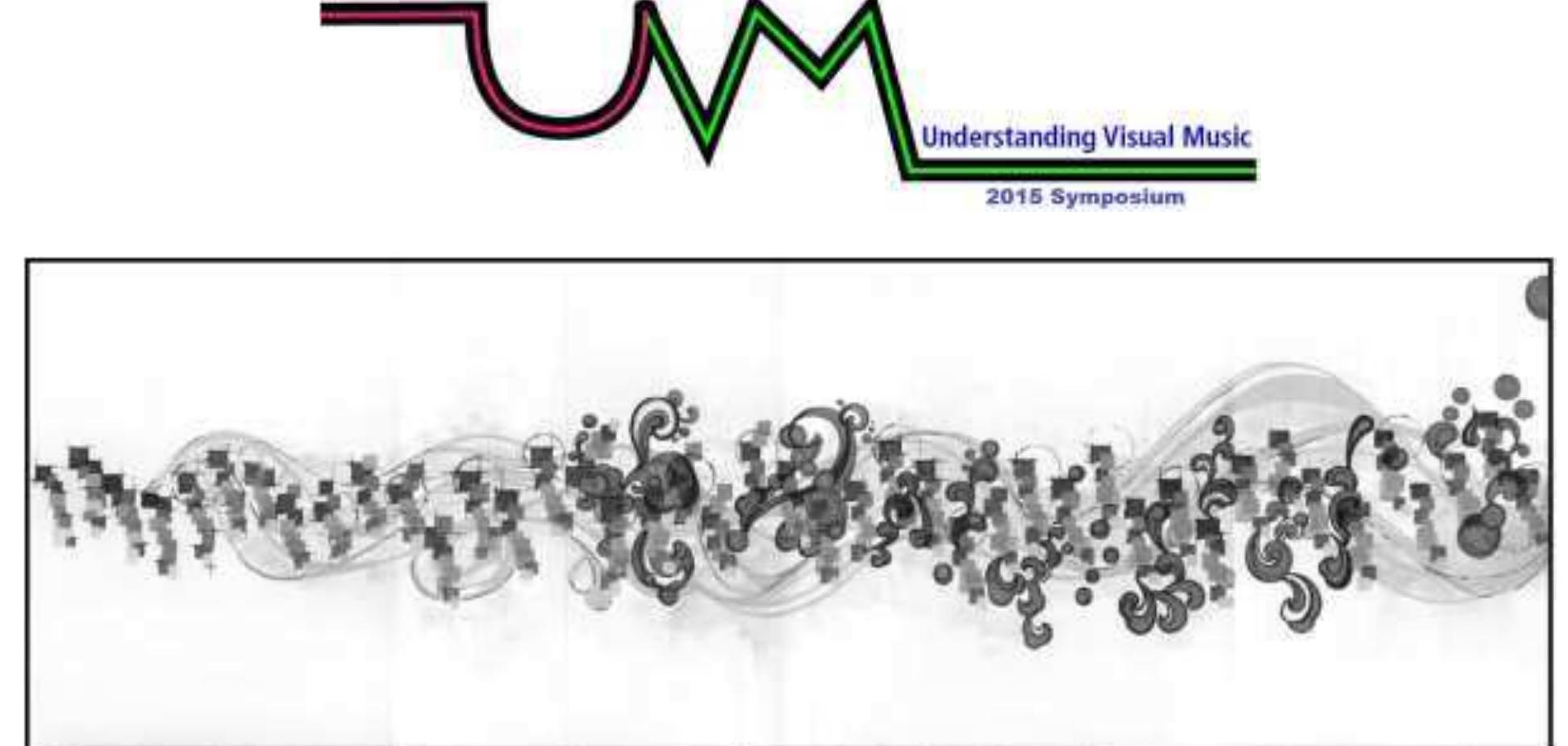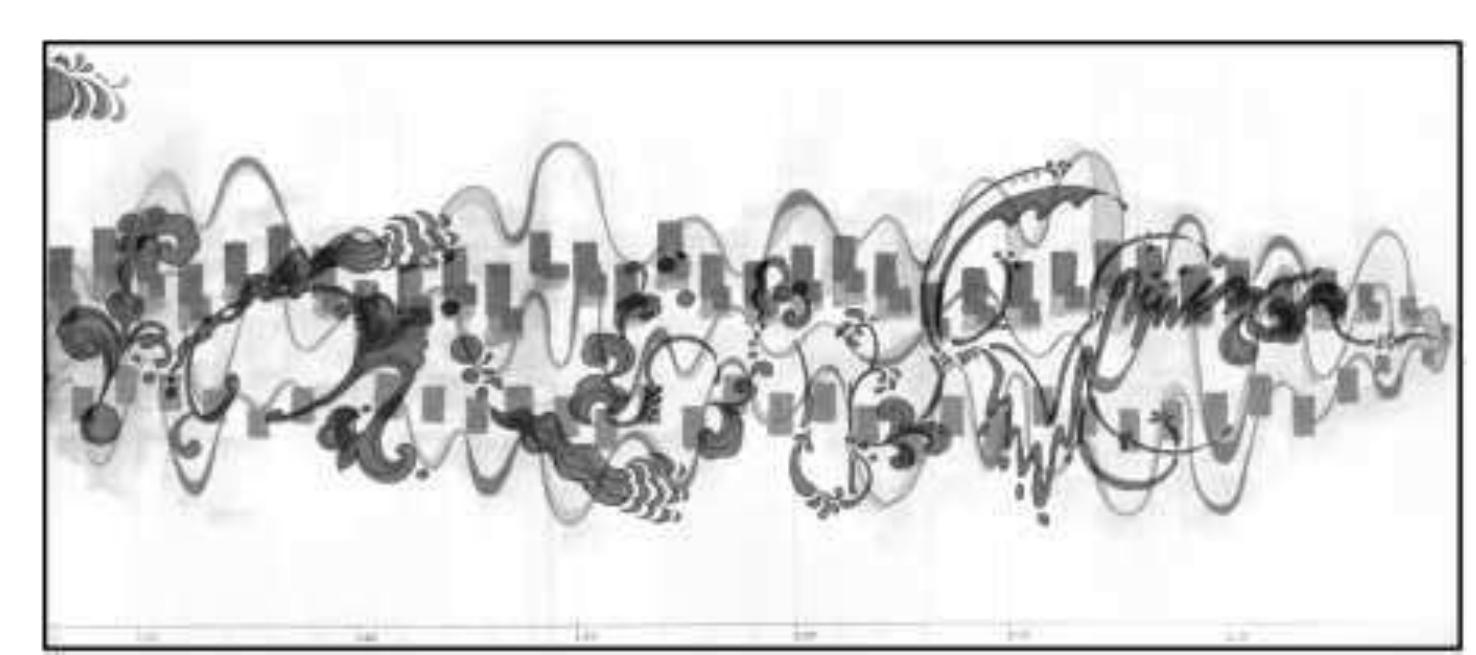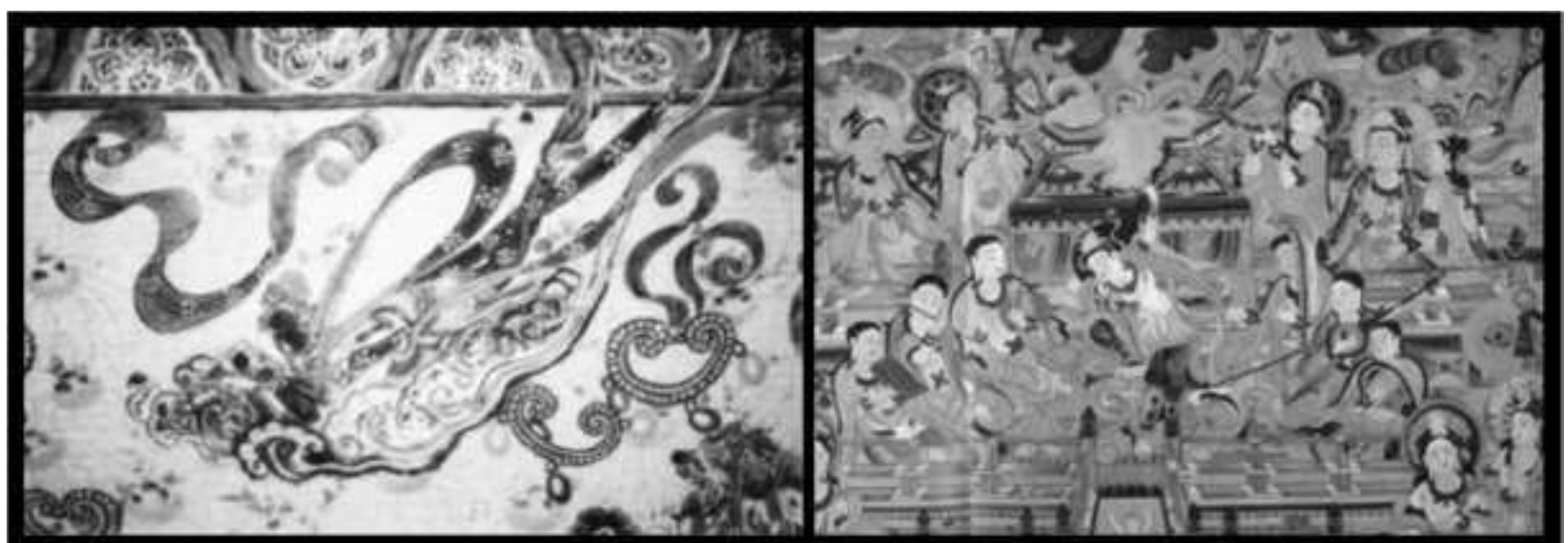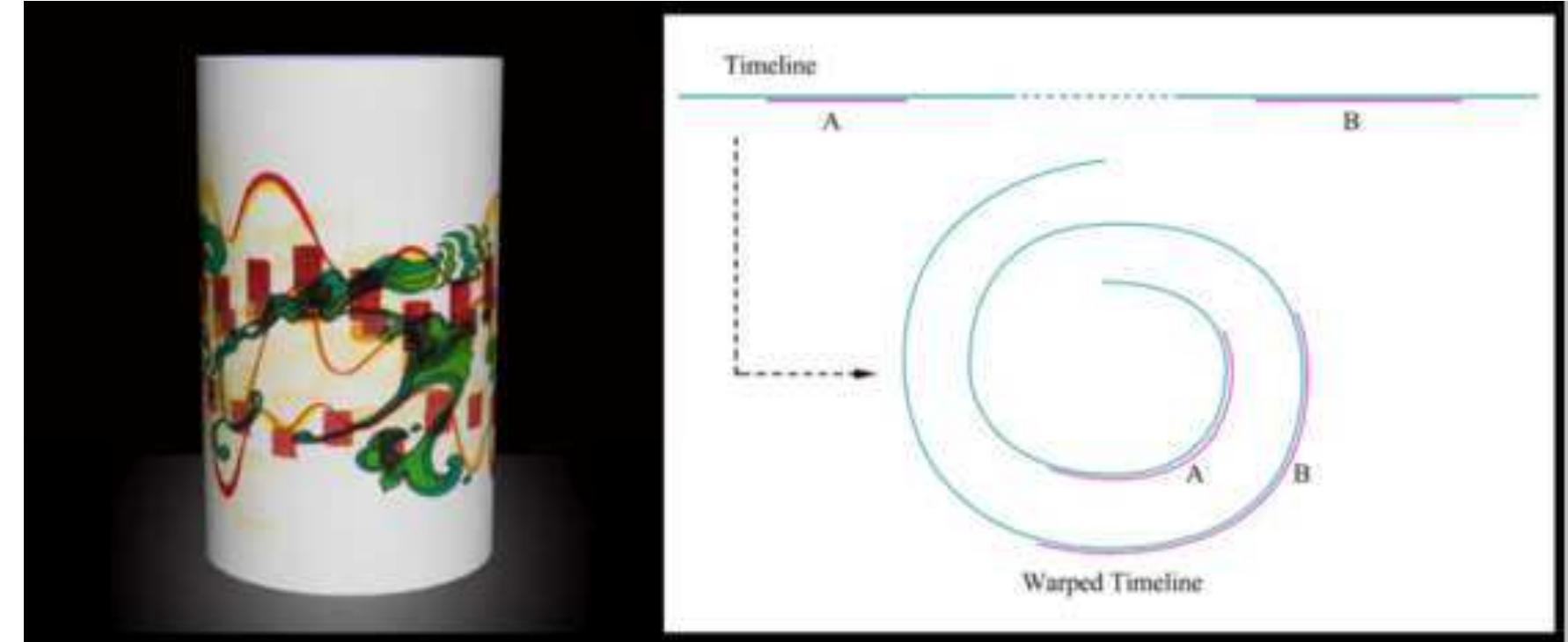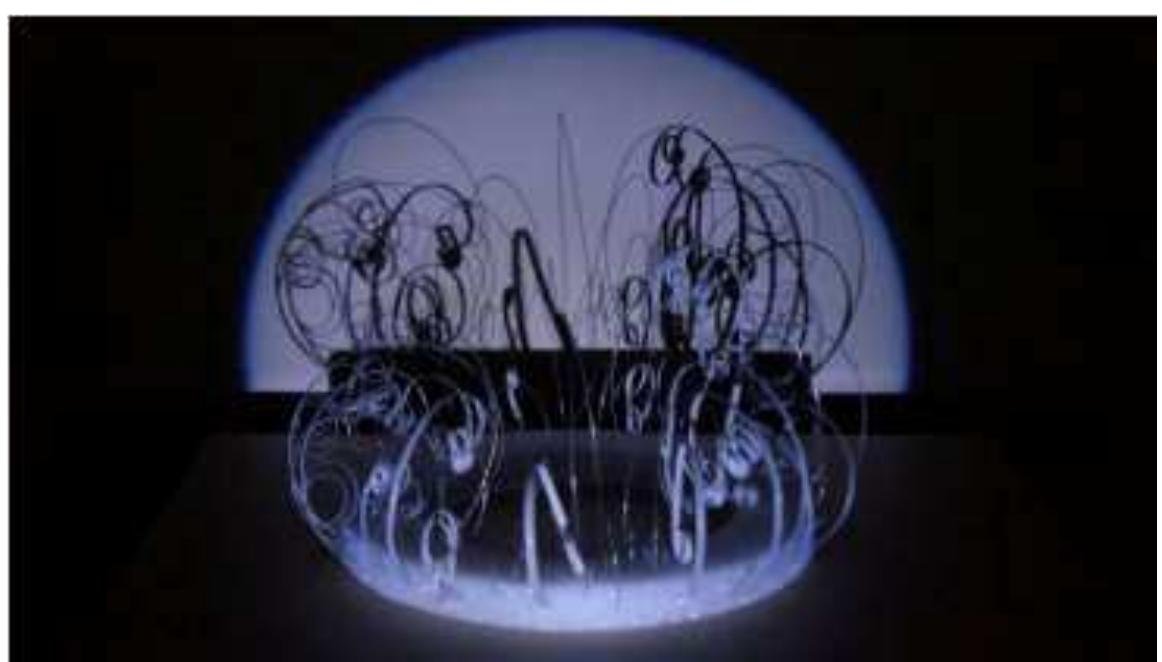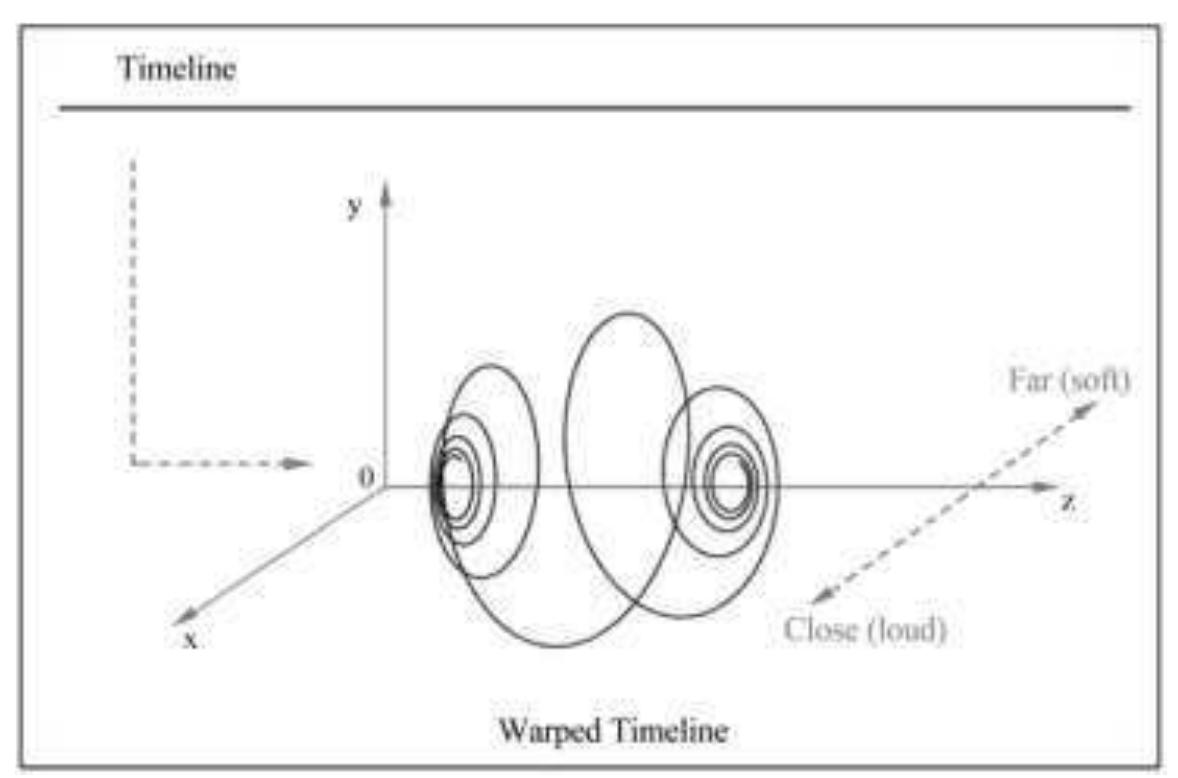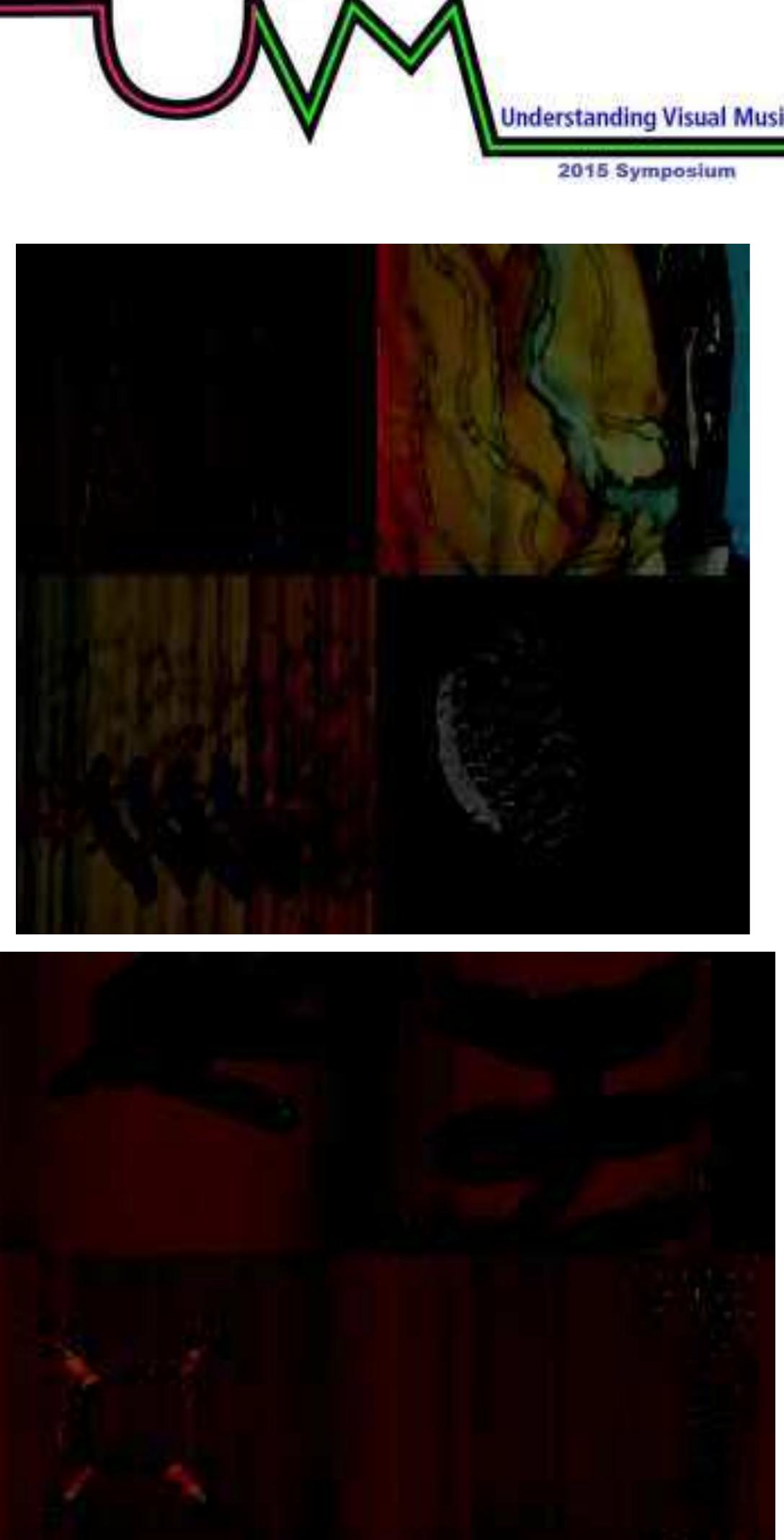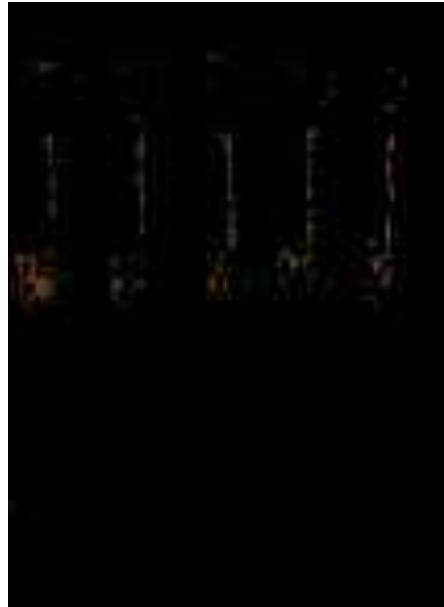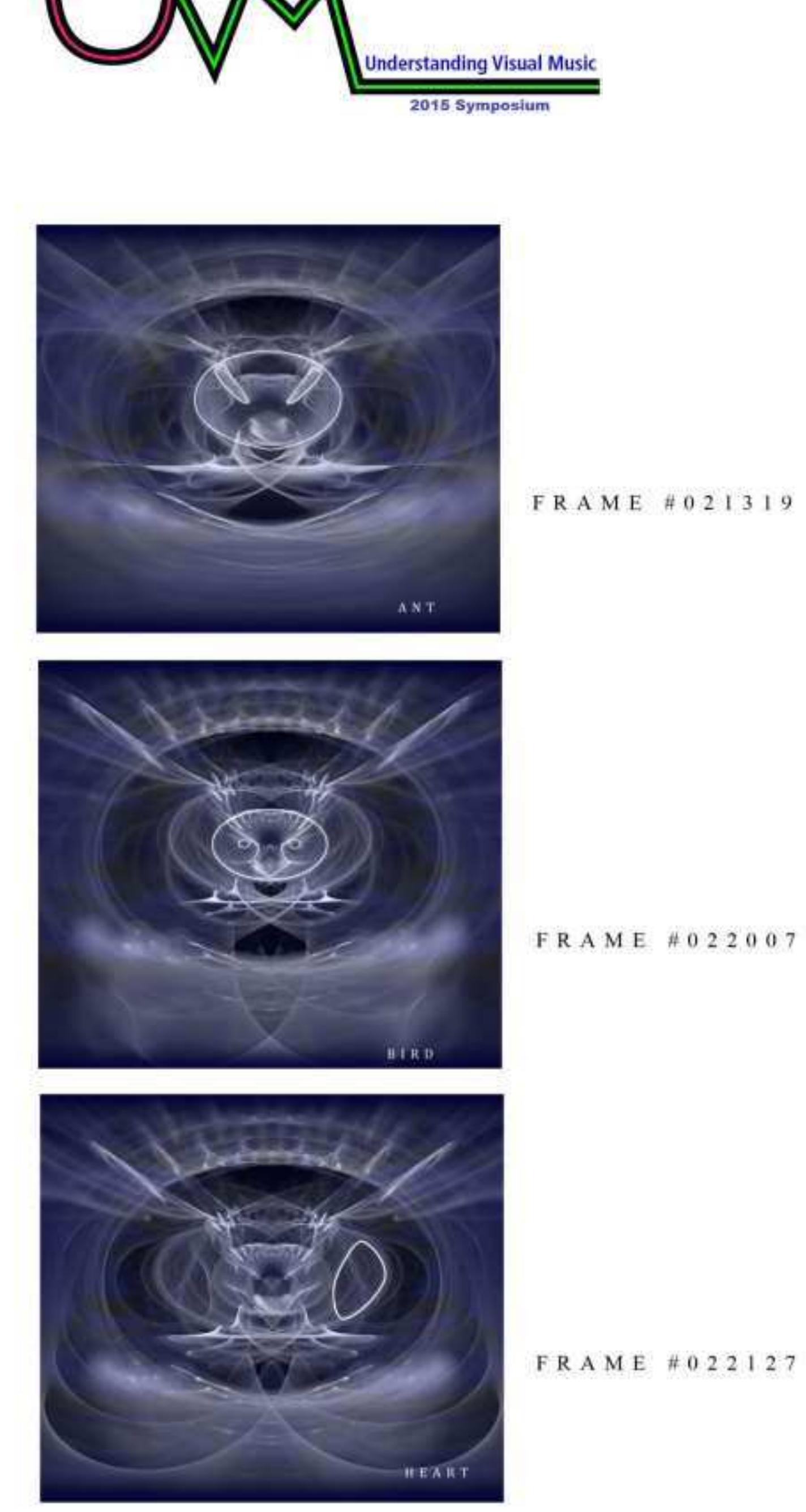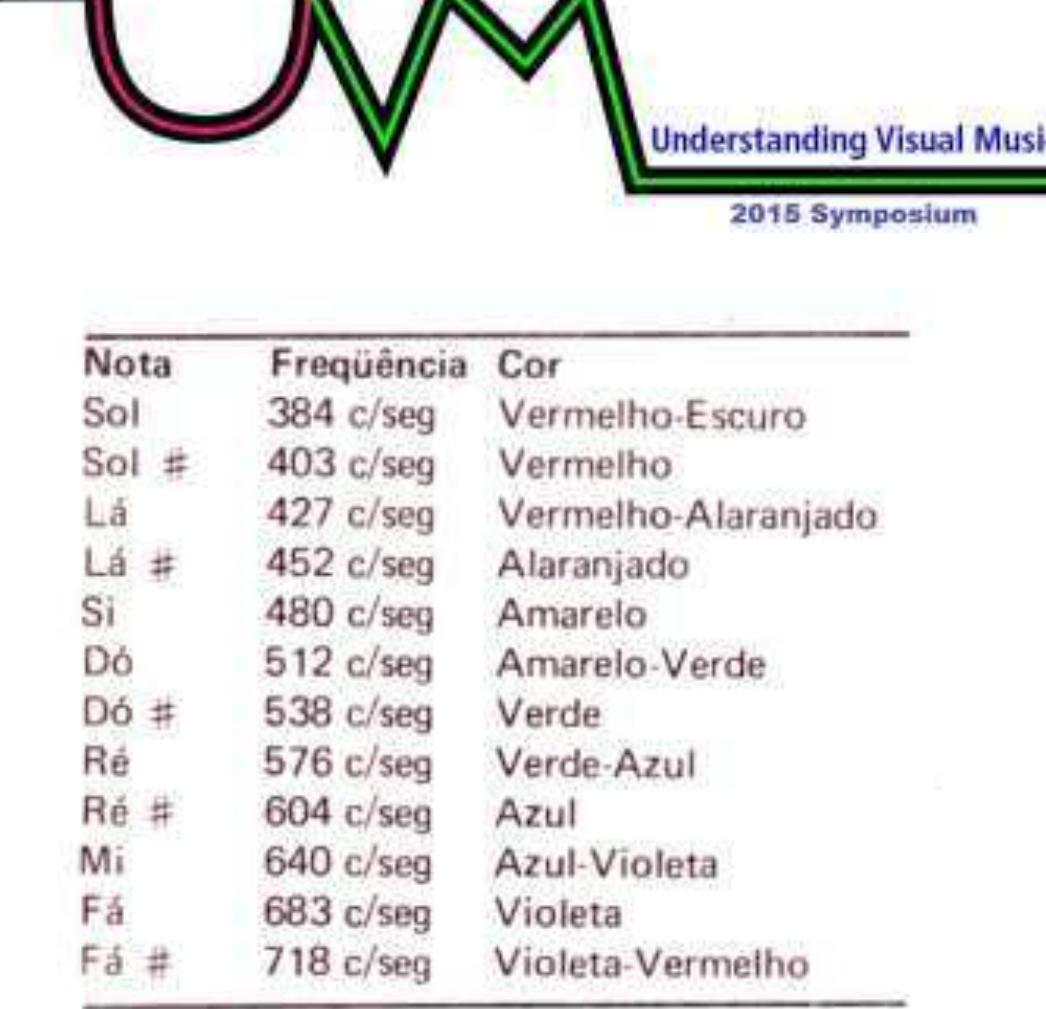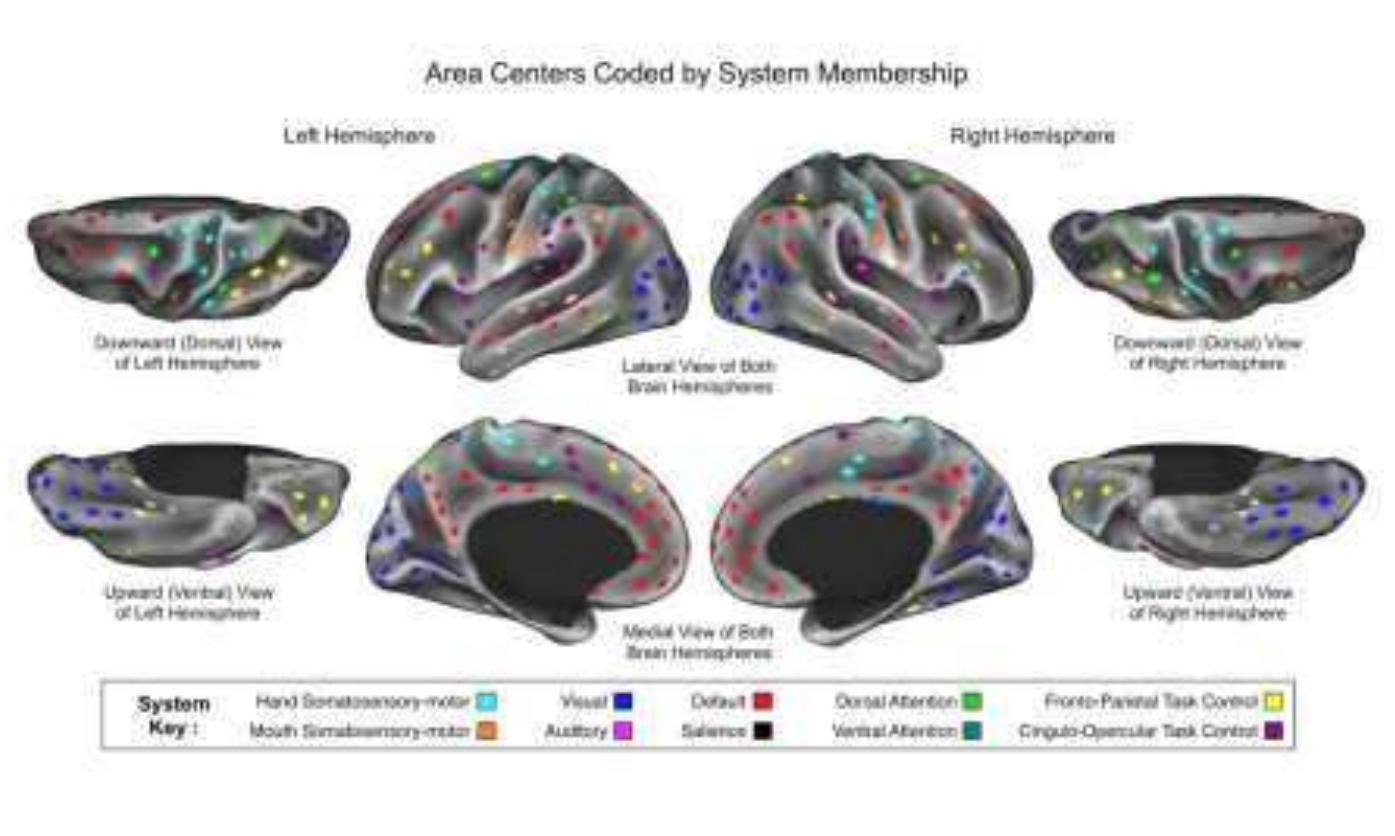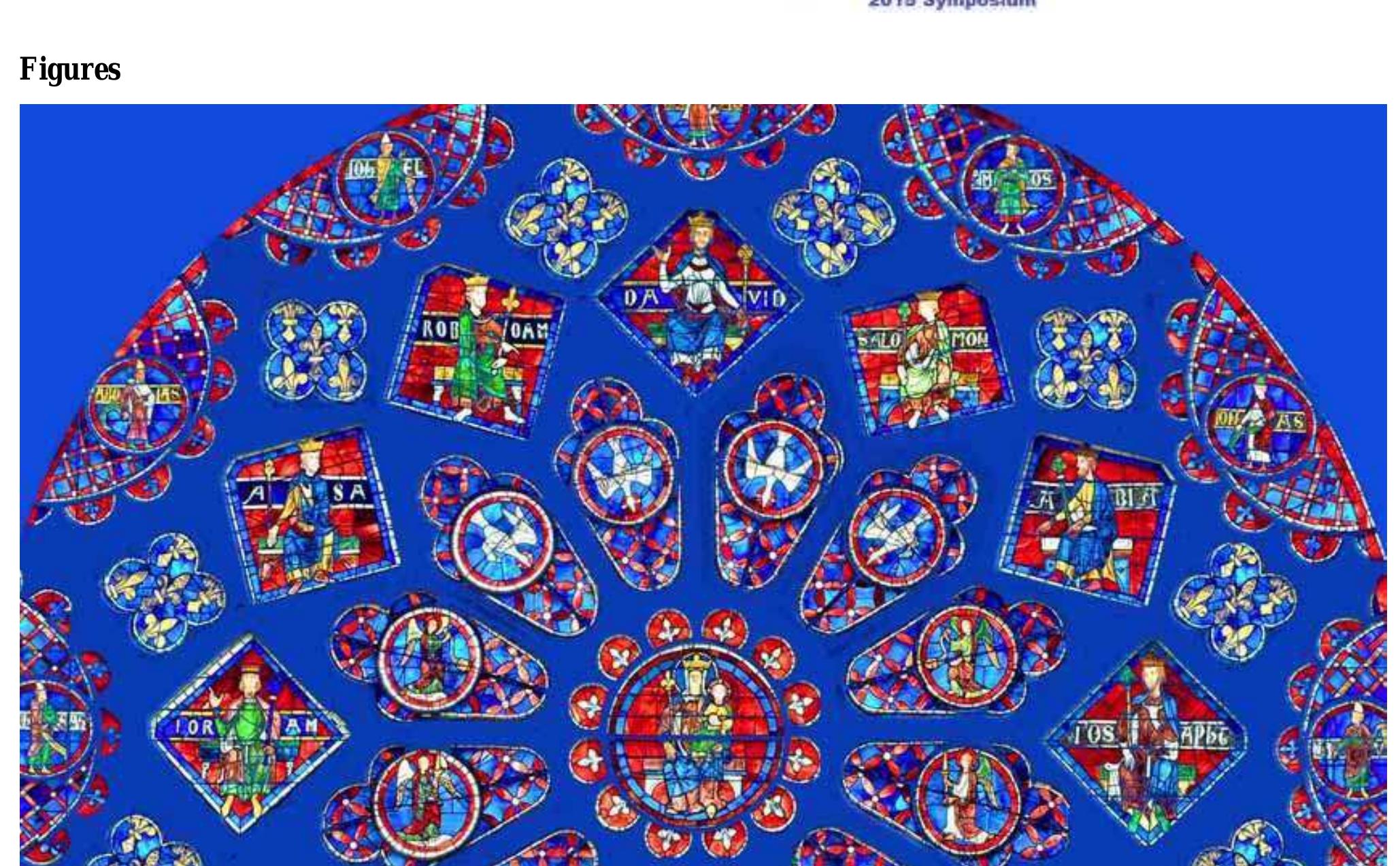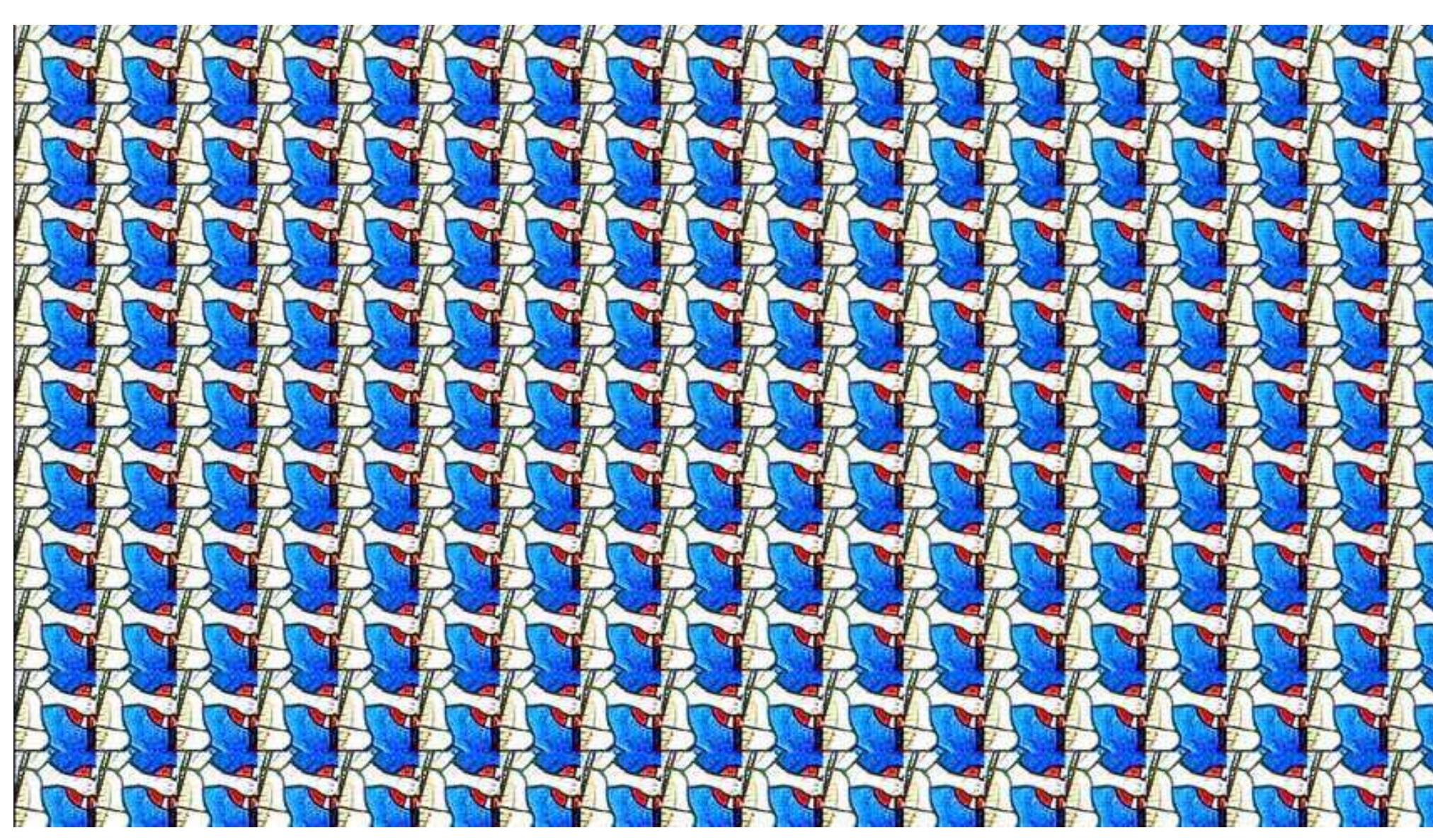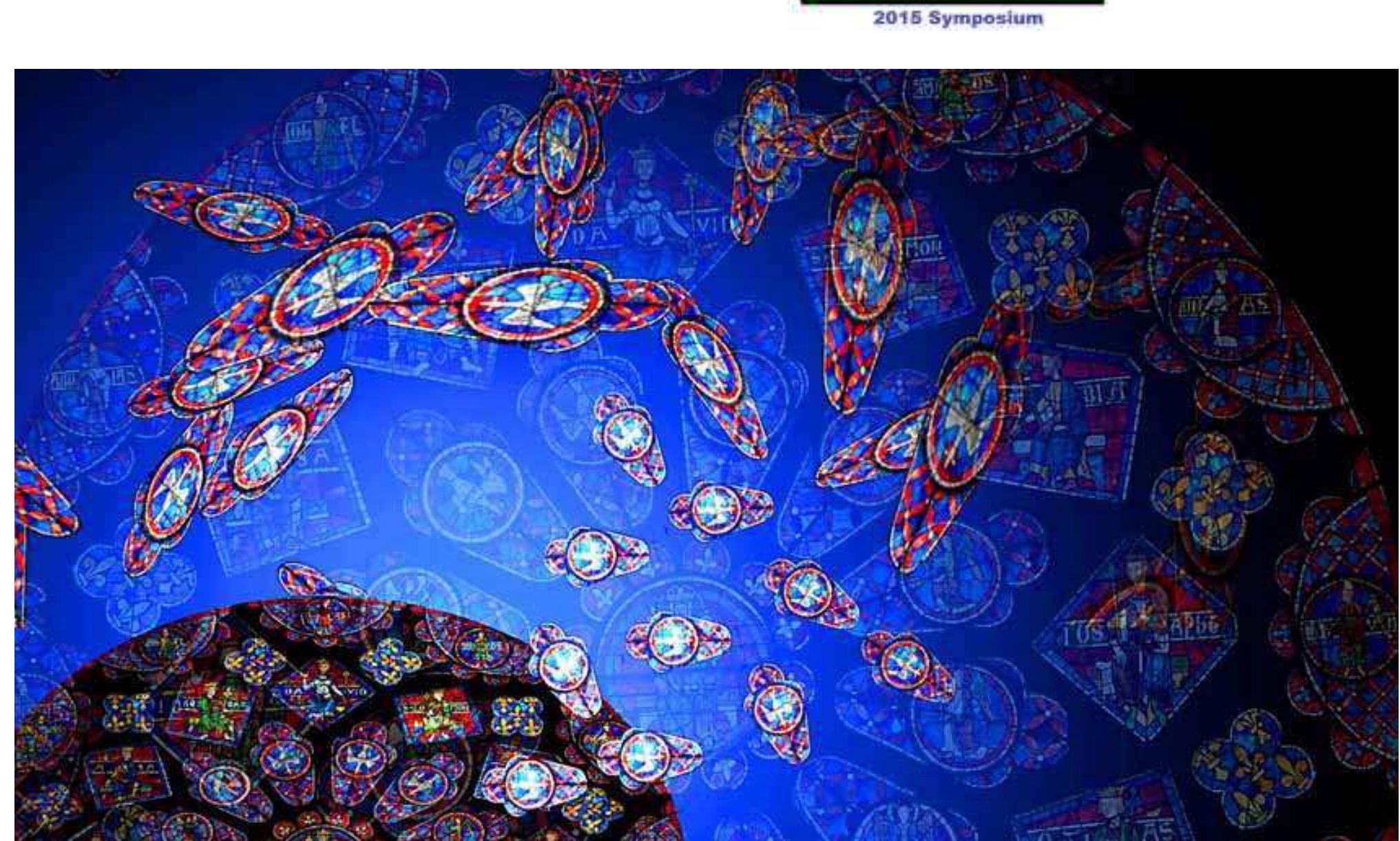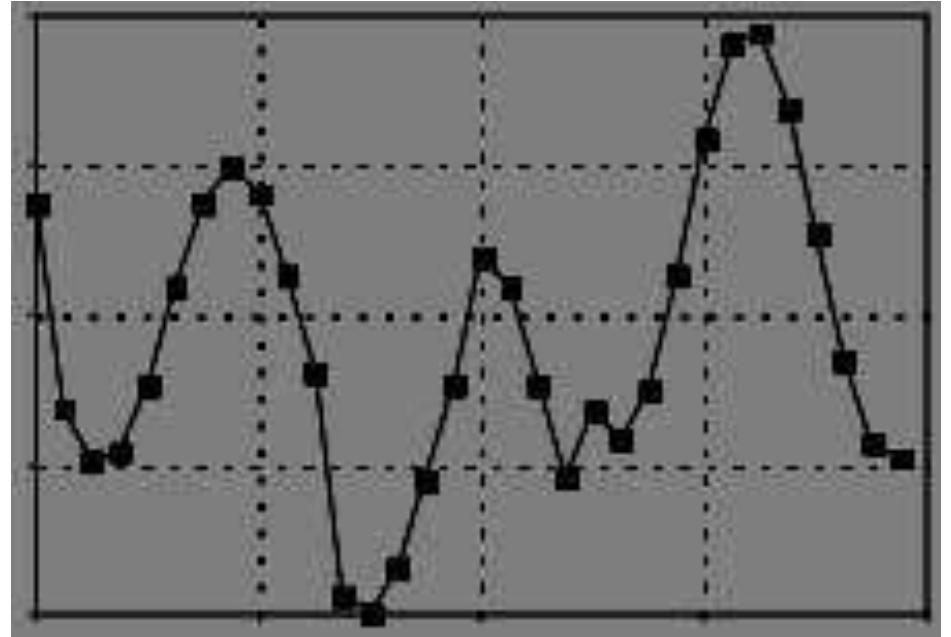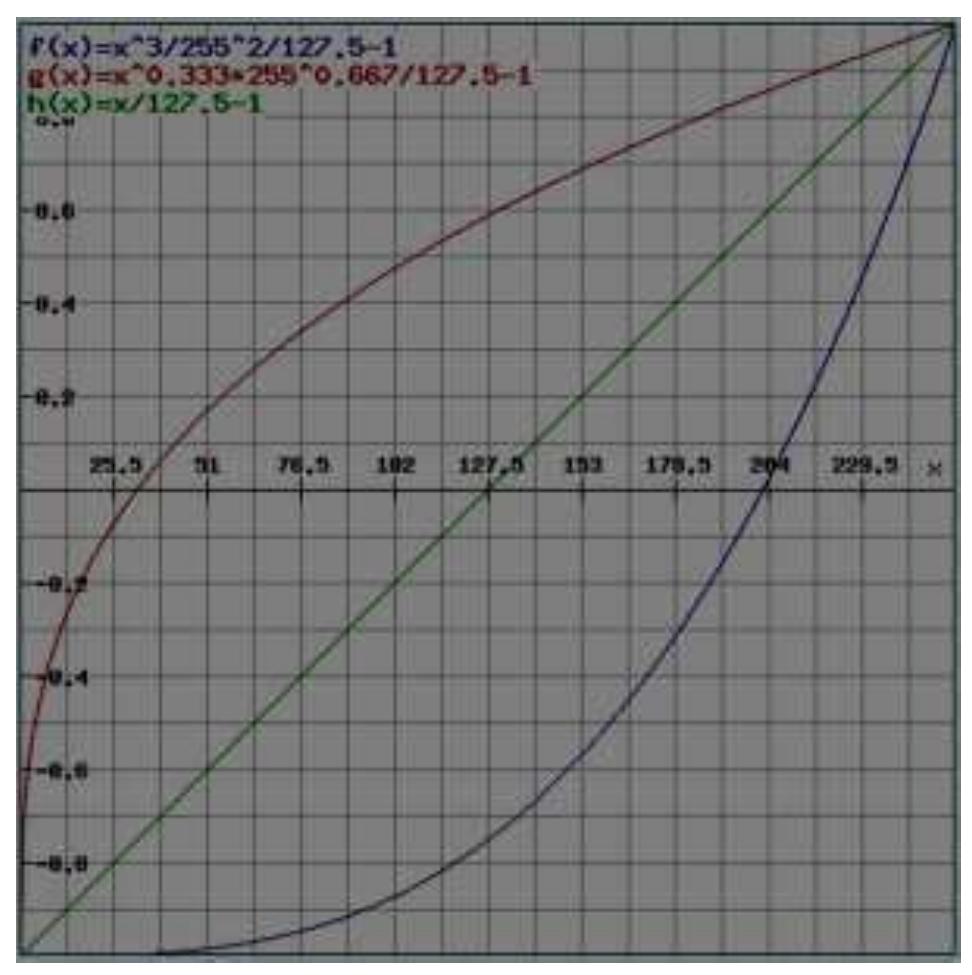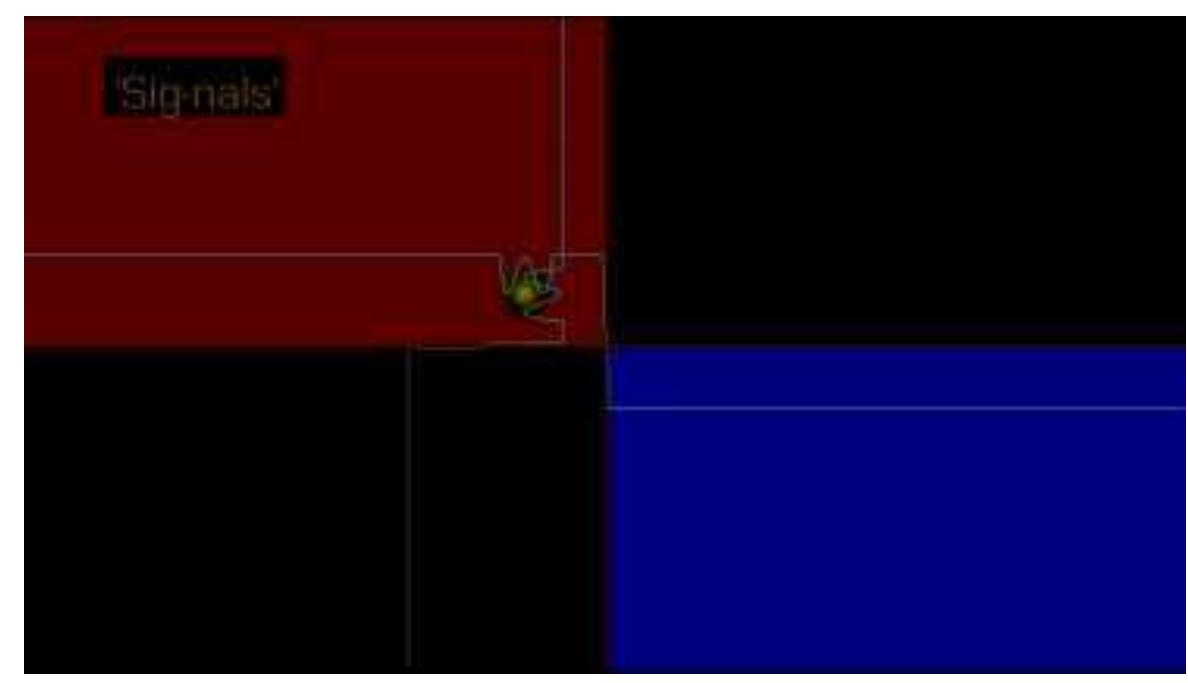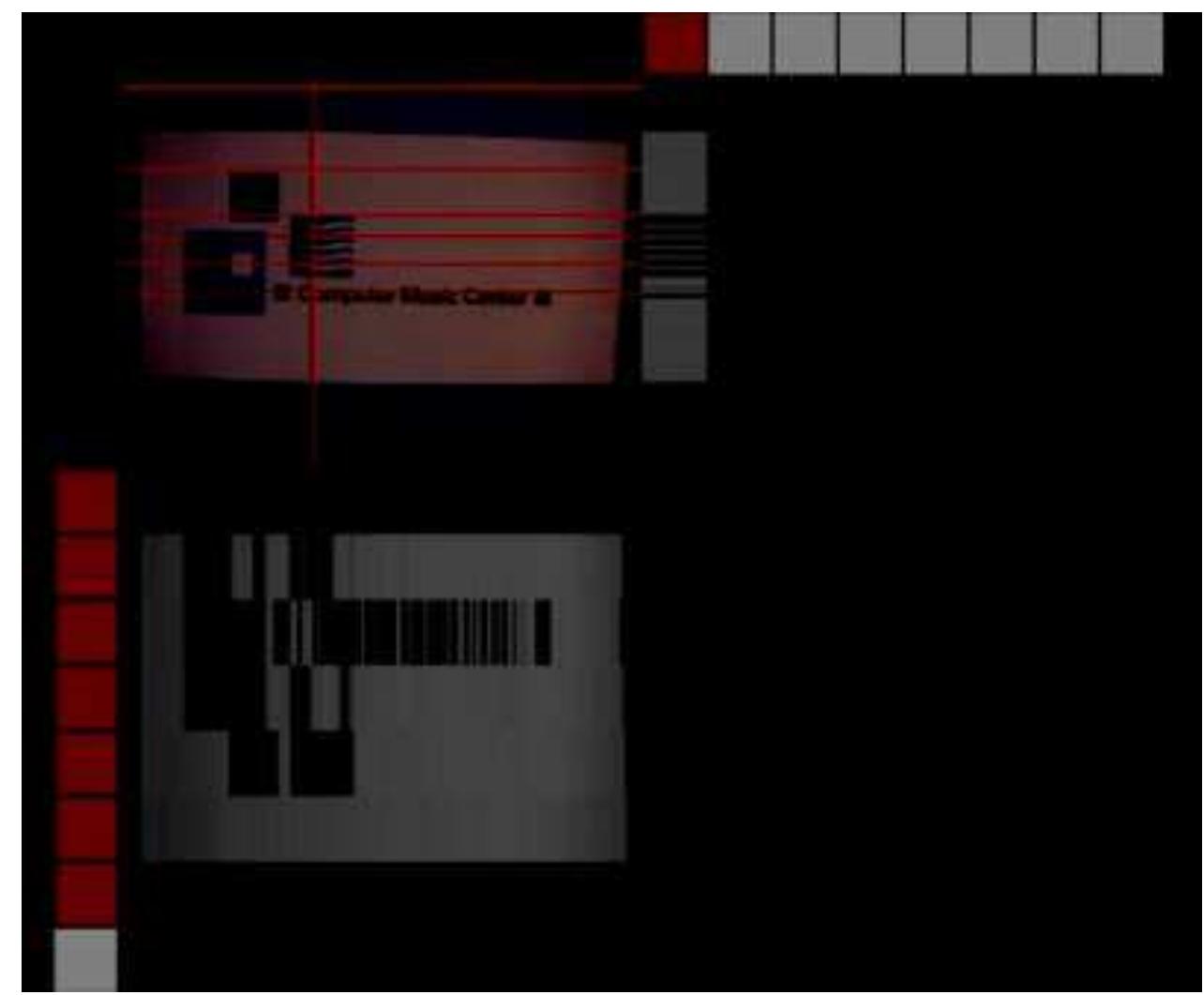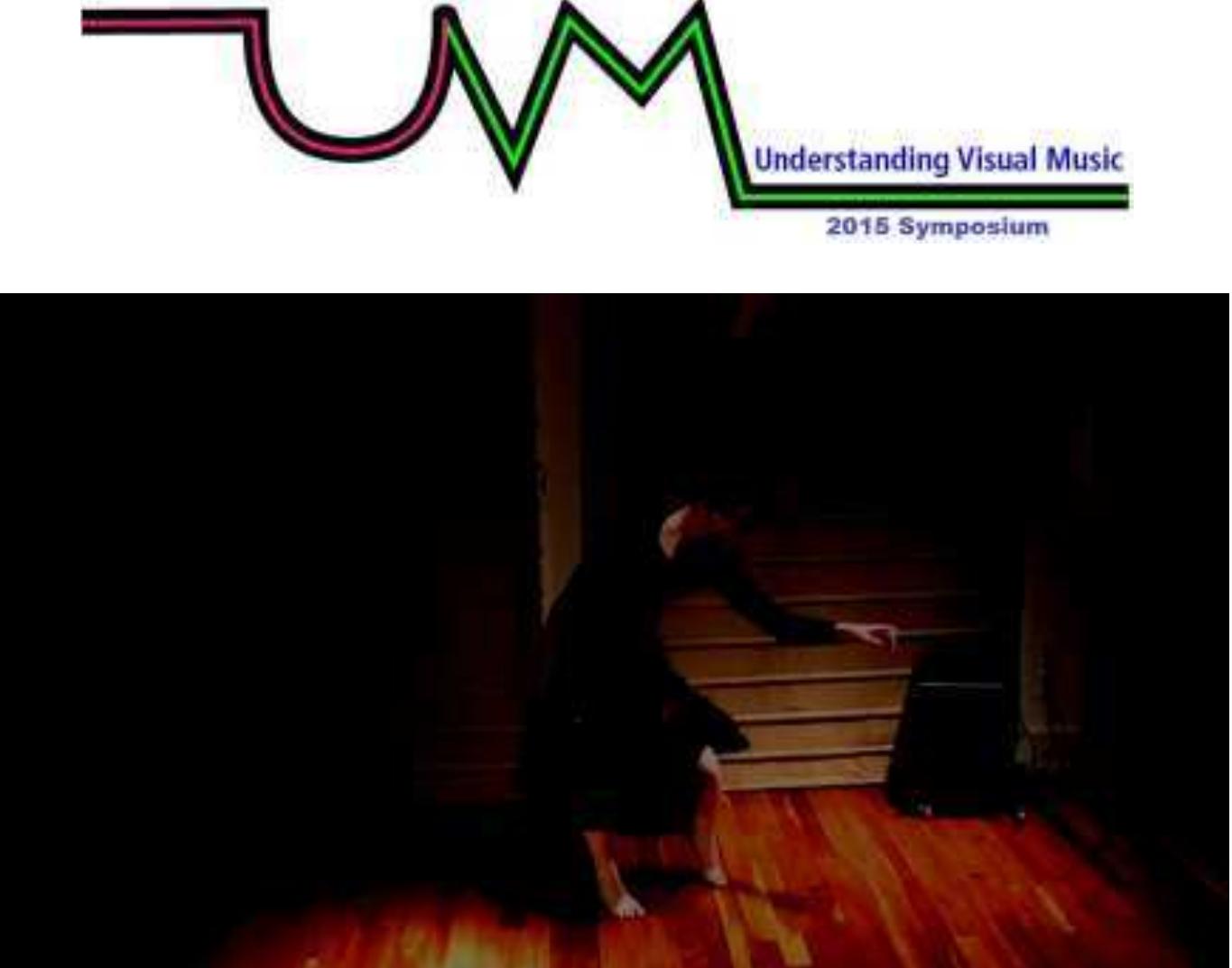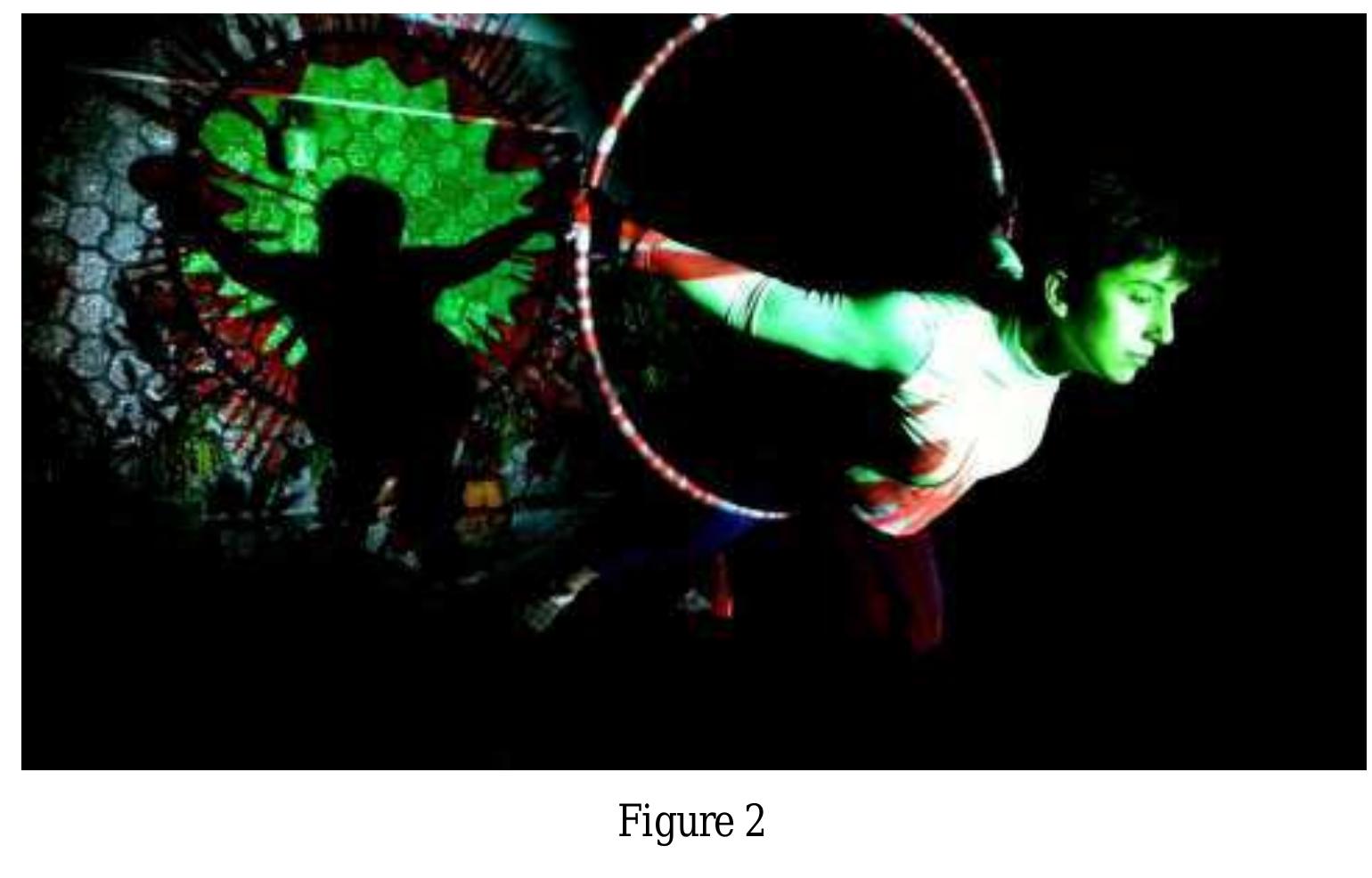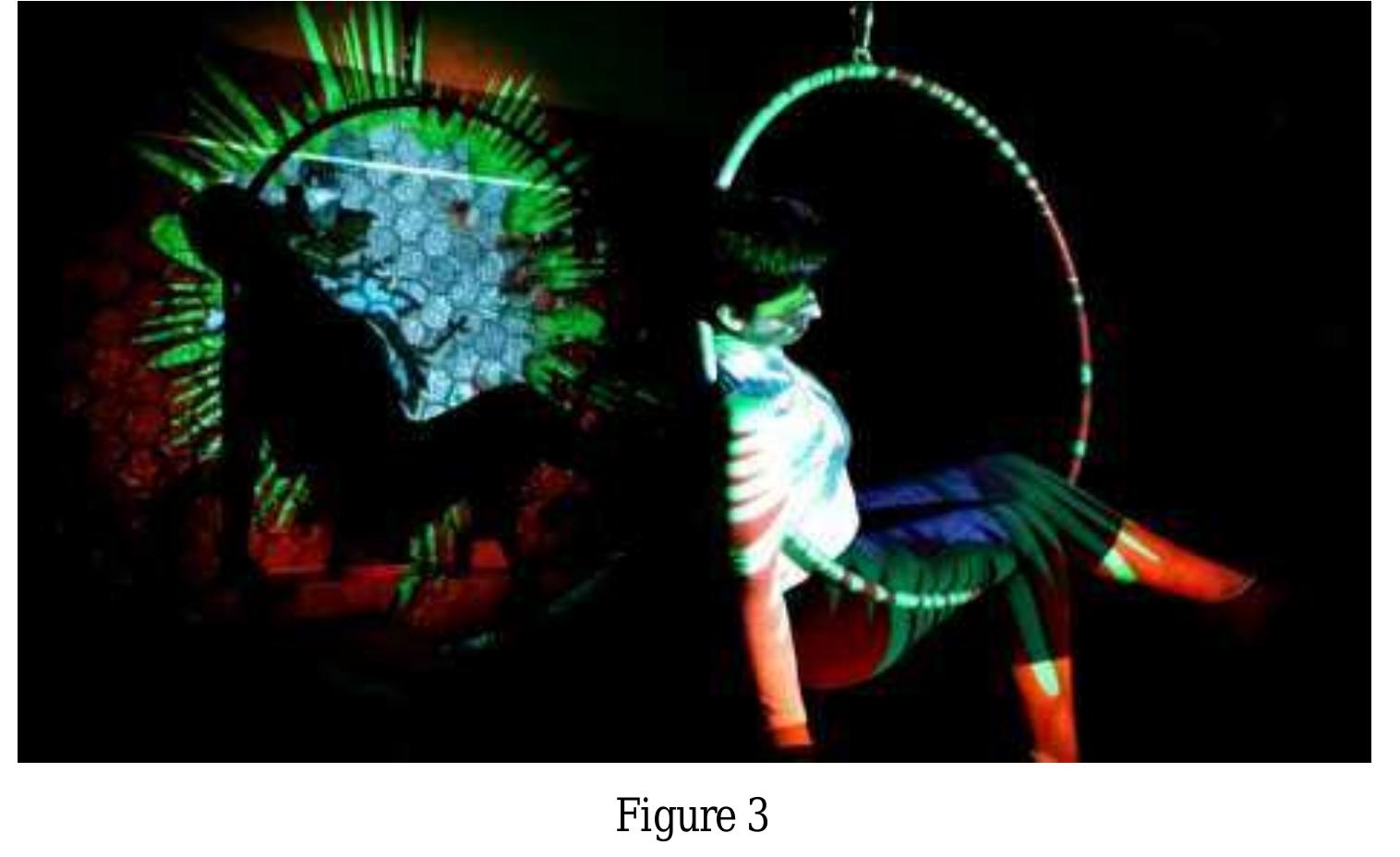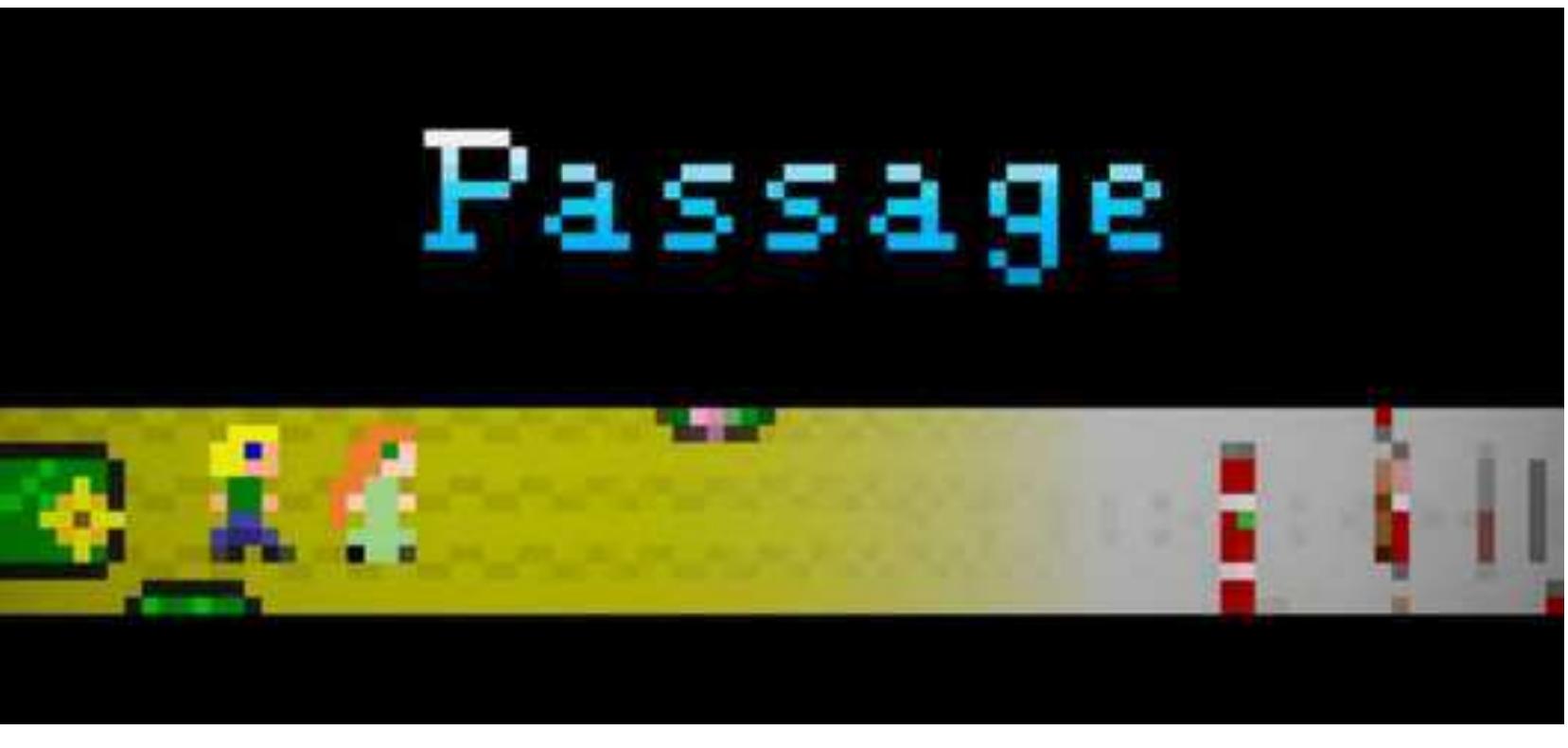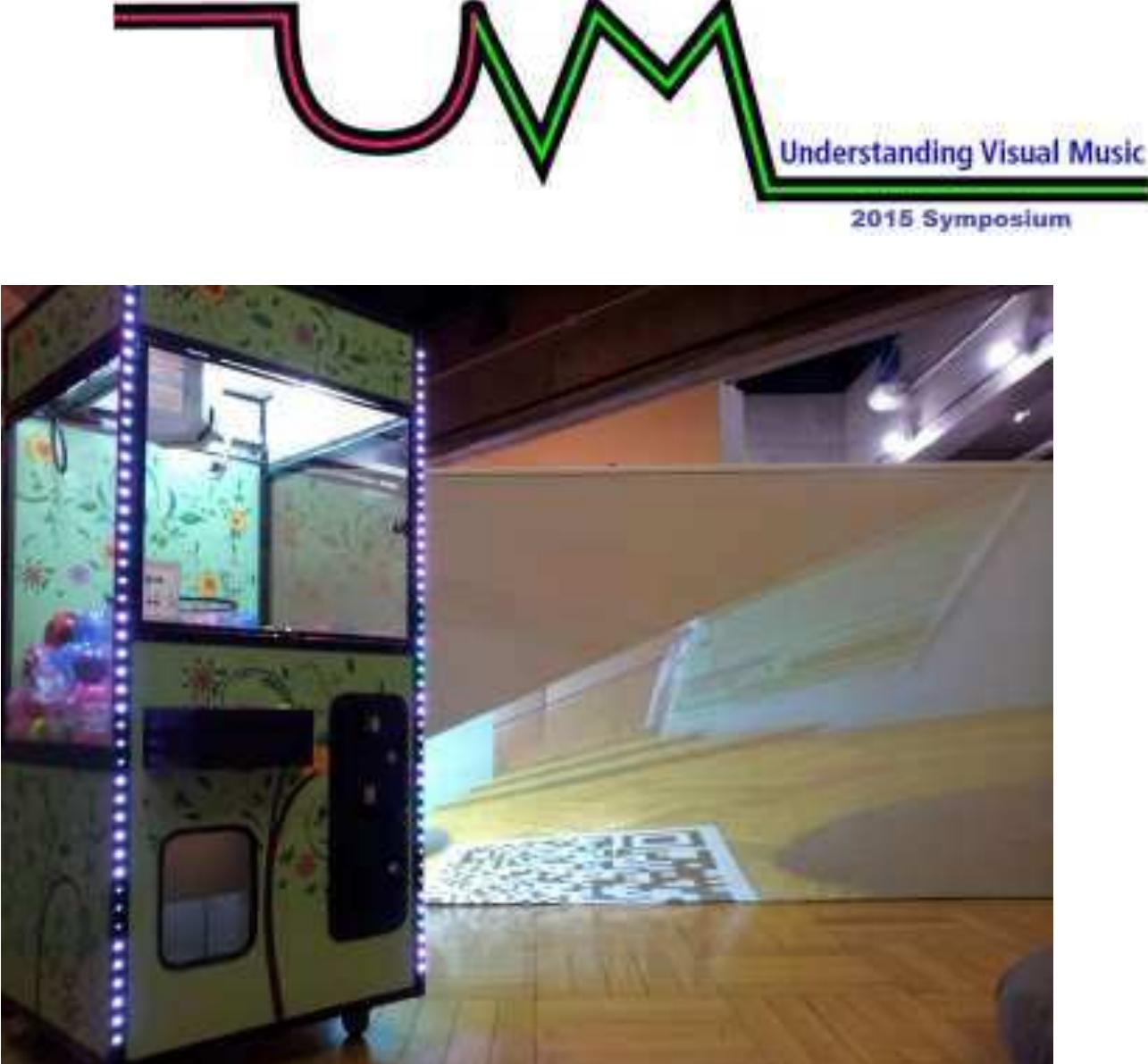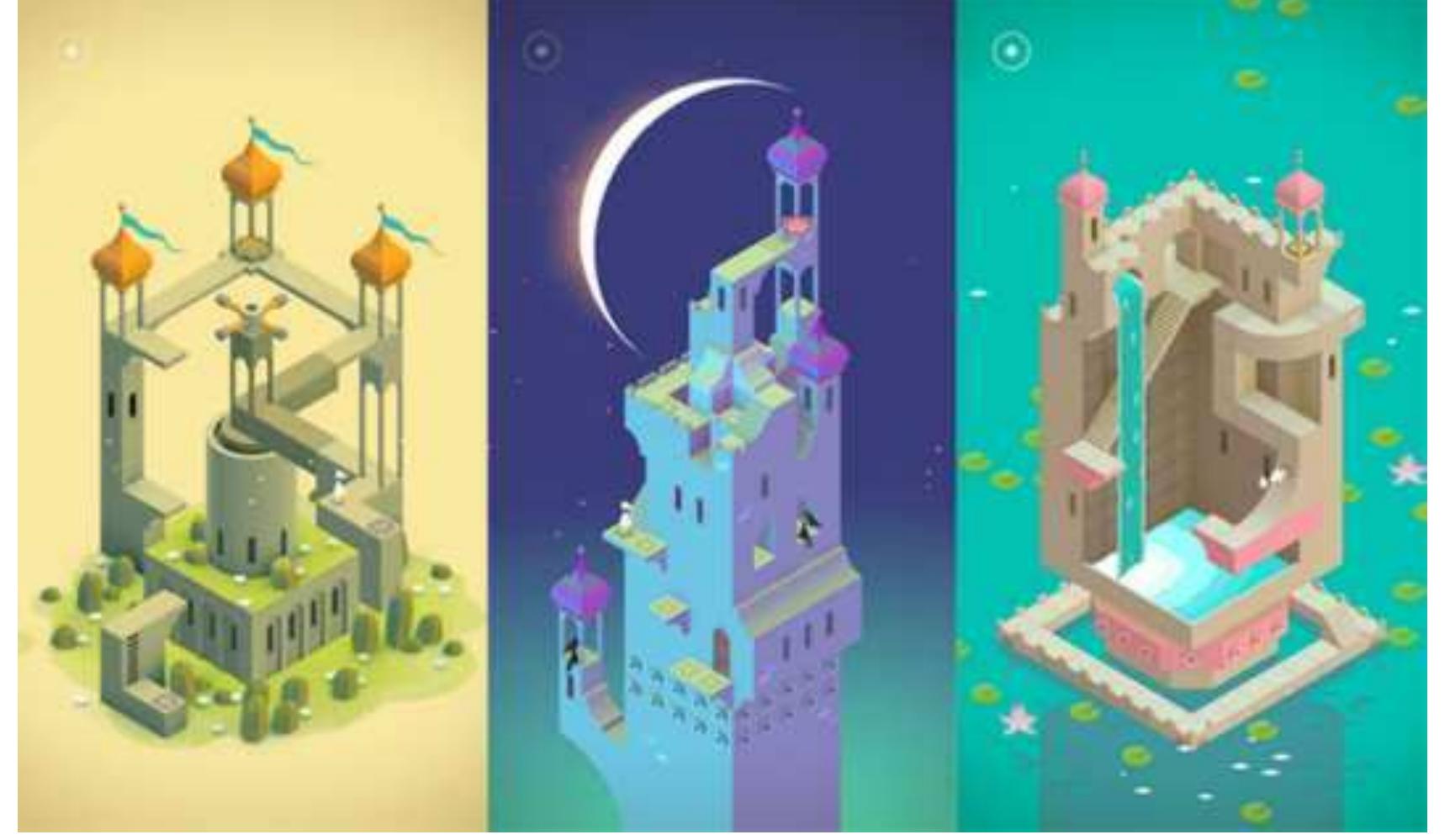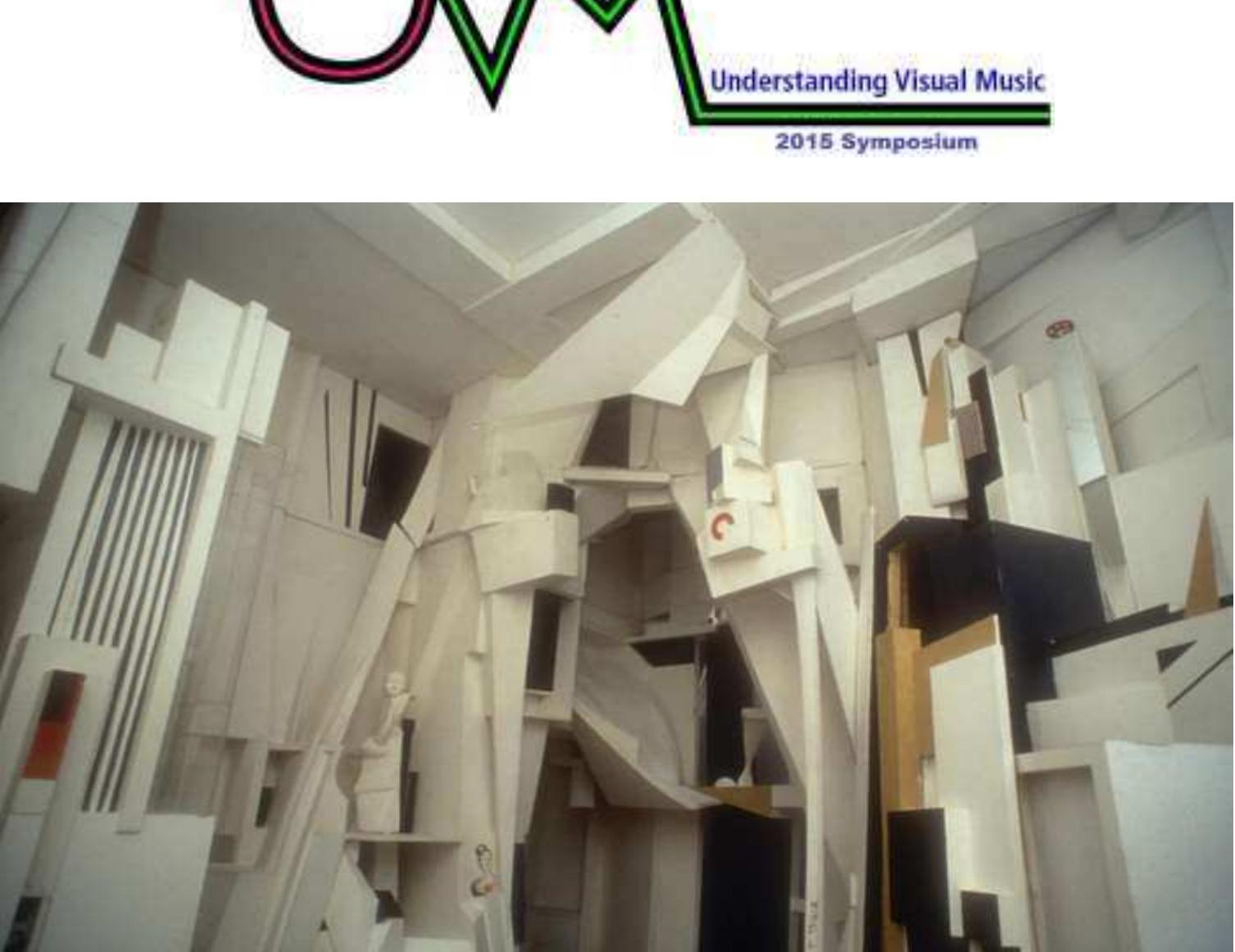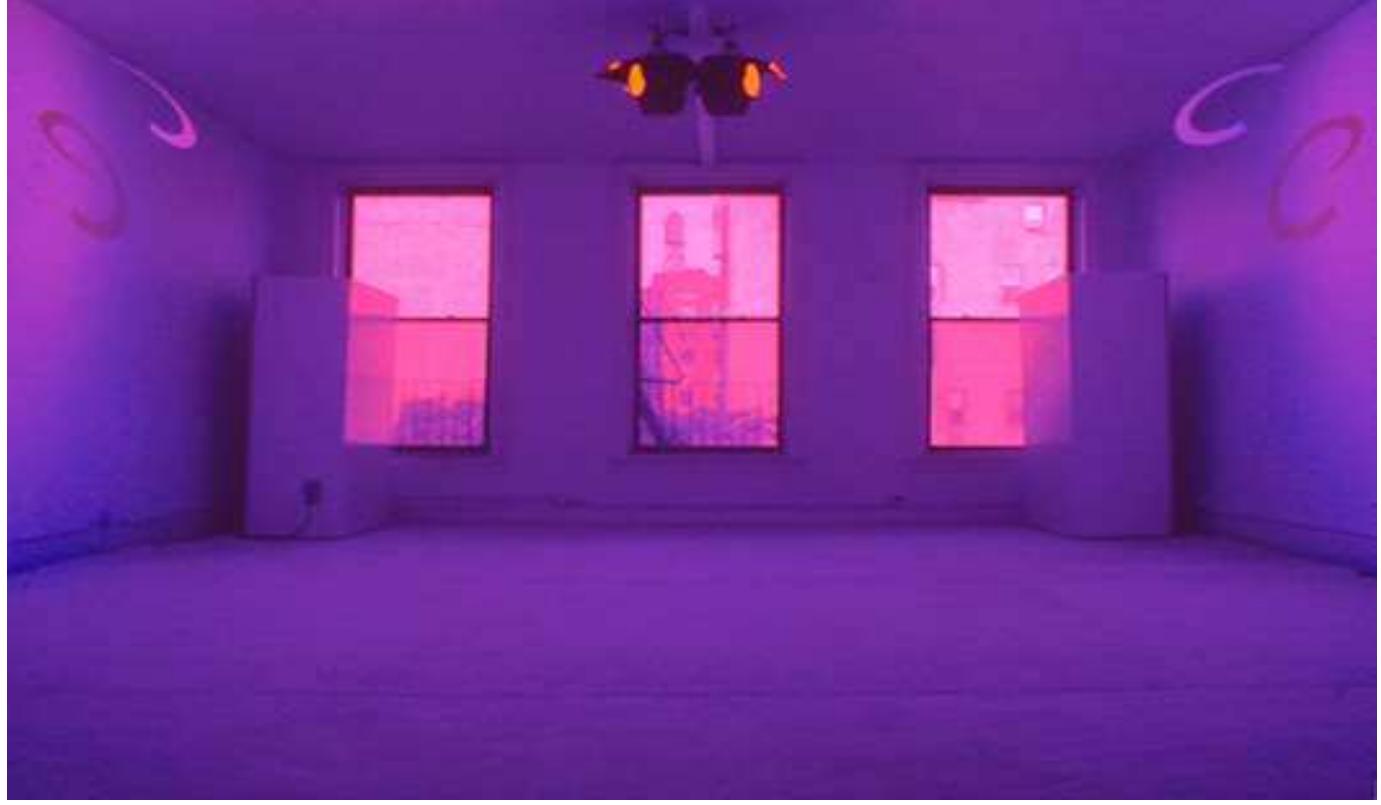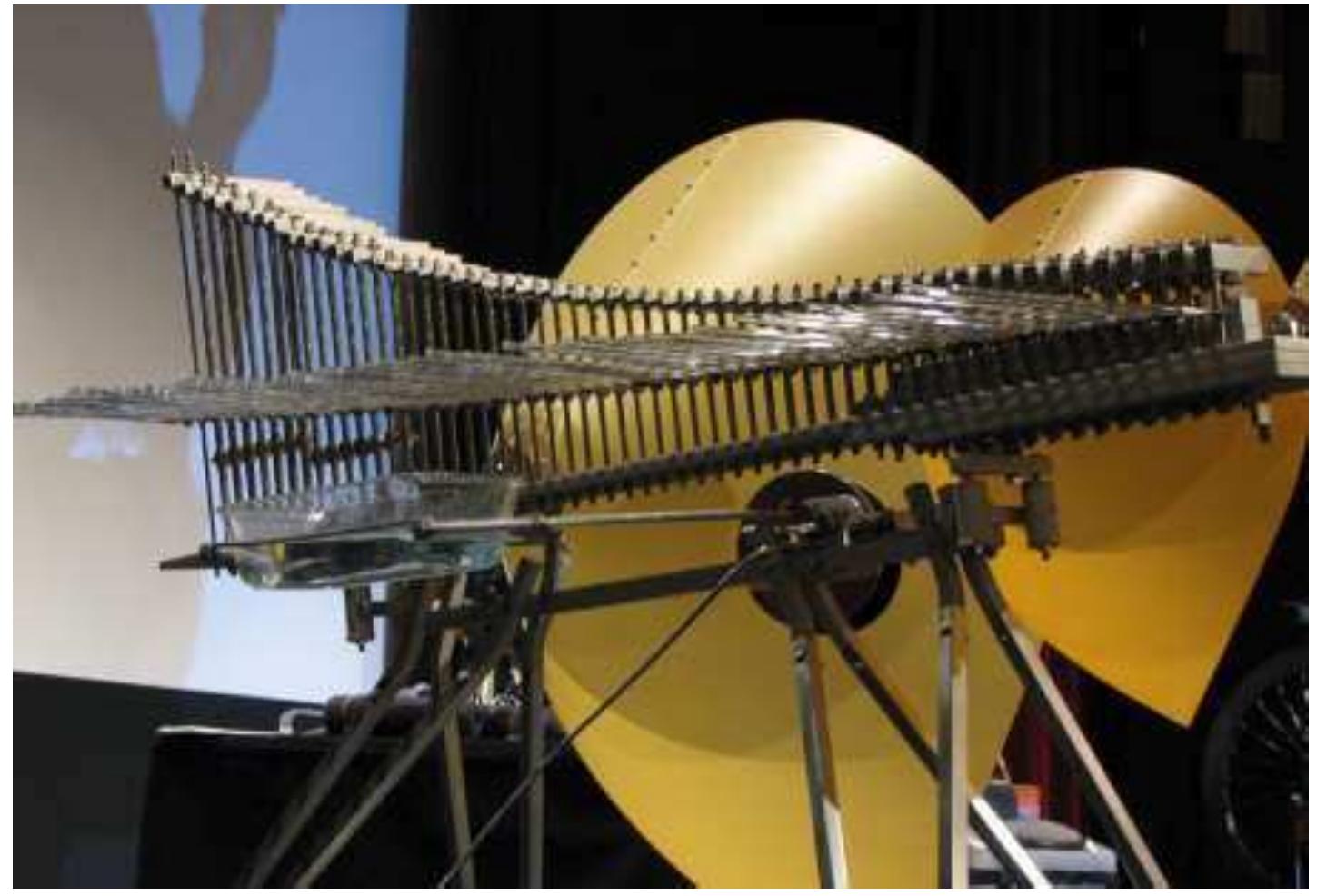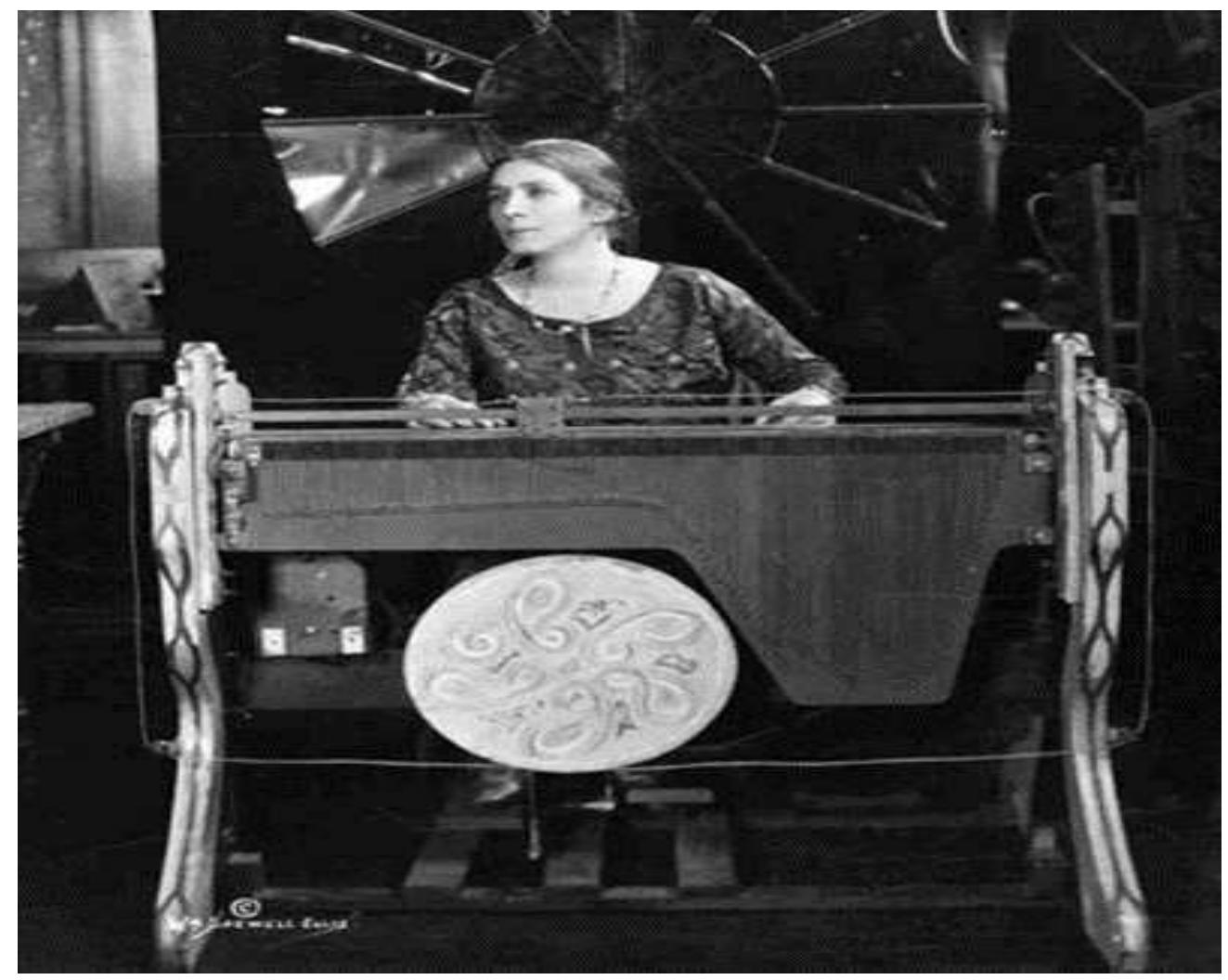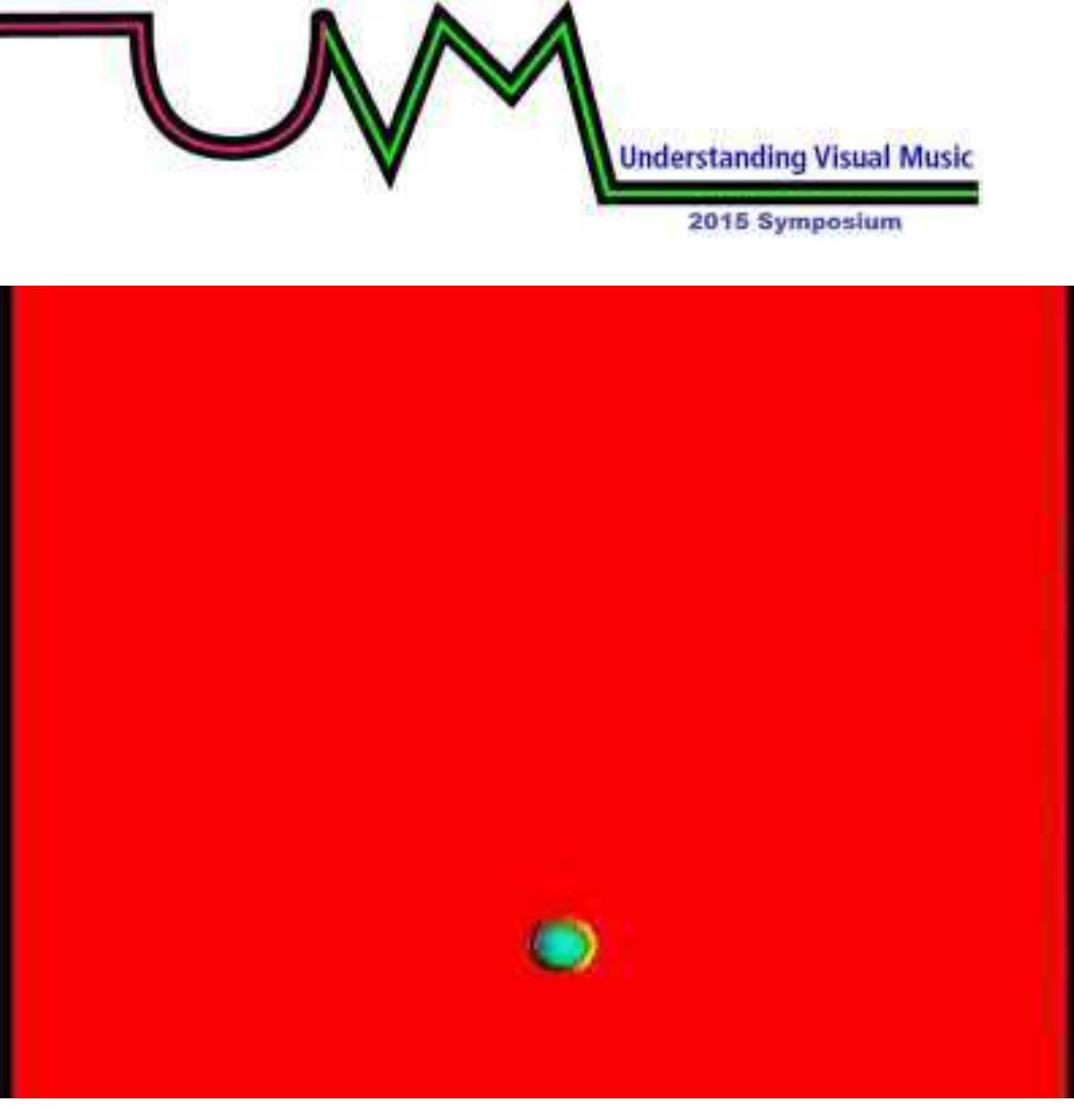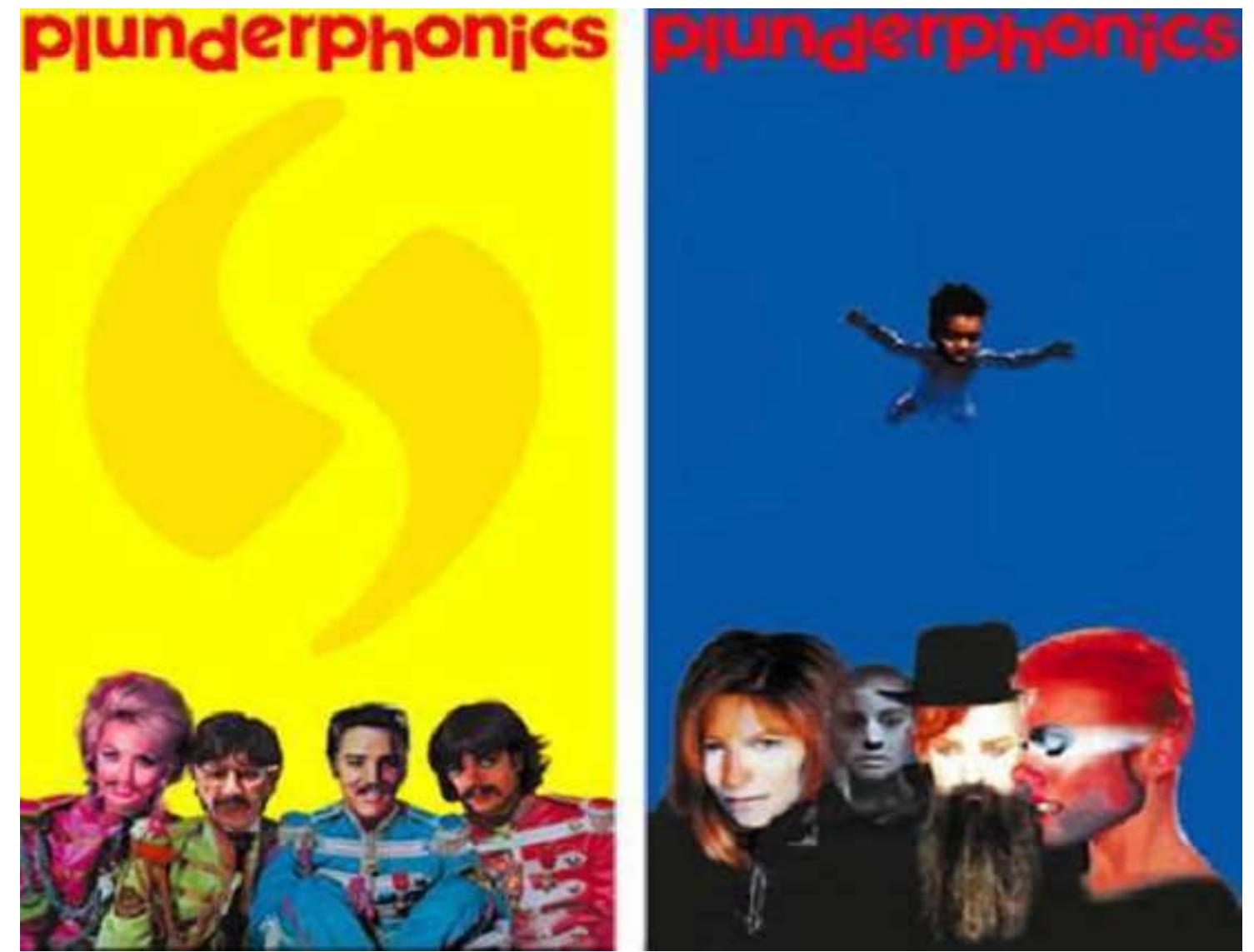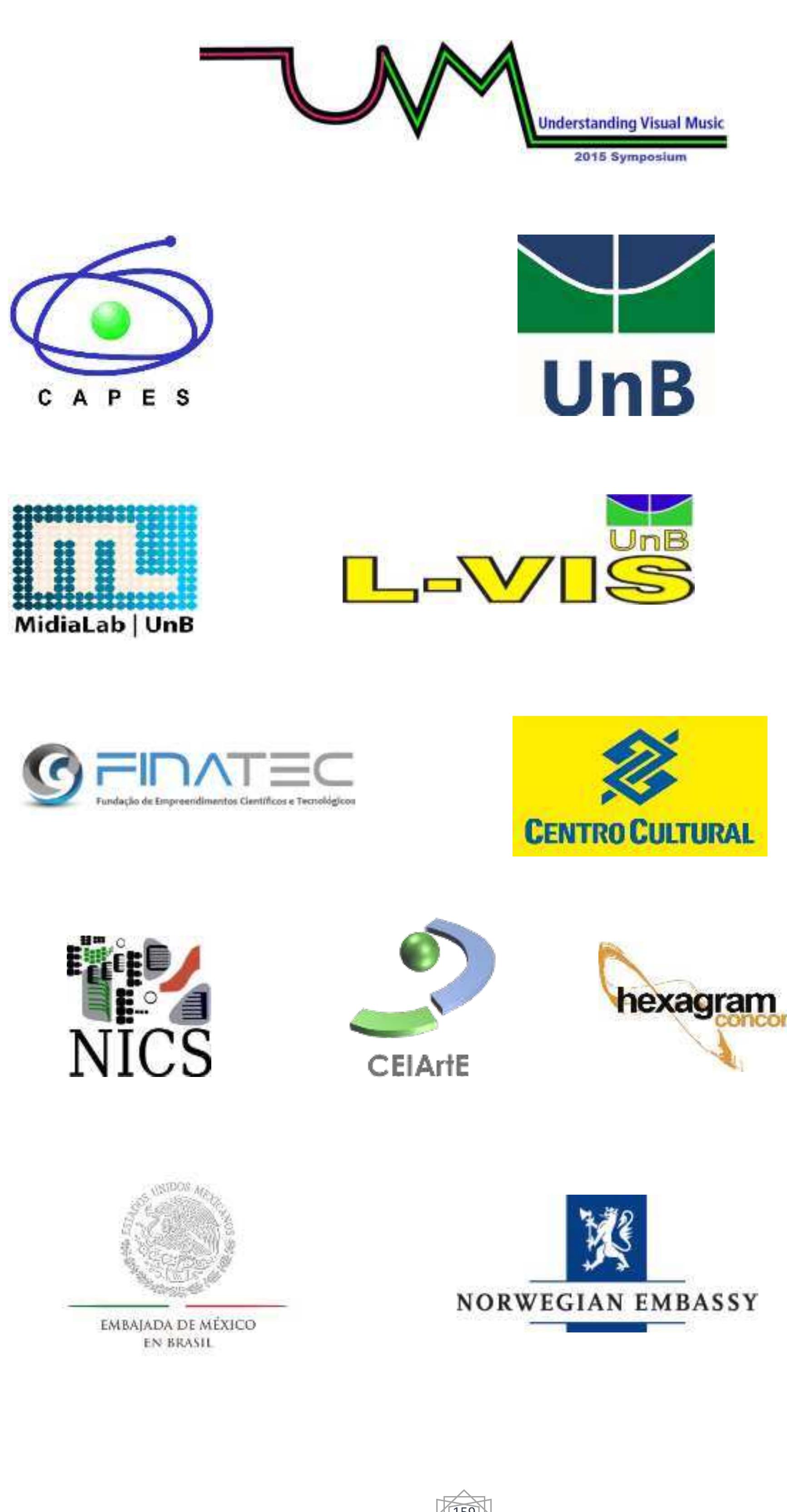VISUAL MUSIC: DISPLAY FORMATS. FULL-DOME PROJECTS. THE LANGUAGE OF A/V SPATIALISATION (original) (raw)
Abstract
If the medium of cinema is born of the addition of temporality to images, new trends in digital art such as architectural mapping video projection, audiovisual (A/V) performance, and new forms of immersive scenography are adding the spatial dimension to the moving image. The latest innovations in the area of digital arts are the result of an acceleration of a trend that can be historically identified through the multiple manifestations of universal expositions. Today’s digital explosion is in fact a consequence of the democratization of instruments that control light, sound, and images through increasingly sophisticated interfaces. Avant-garde artistic approaches, with their constant push toward the dematerialization of artwork, have merged with scenographic spatialization technologies. This merger of worlds has led to new A/V performance productions that reveal the emergence of a new language, namely that of audiovisual spatialization. This language leverages the creative potential of new audiovisual instruments by combining sound and light waves with the spatial component. This paper will address this new approach based on analysis of multiple case studies.
FAQs
AI
What role do universal expositions play in audiovisual spatialization?add
The paper illustrates that universal expositions, beginning with the Philips Pavilion in 1958, shaped architectural space into an instrument capable of producing visual music and immersive experiences.
How is A/V spatialization influencing contemporary digital art practices?add
The study shows that contemporary digital art is increasingly embracing A/V spatialization techniques, leading to novel creative compositions that integrate sound and visuals in immersive environments.
What implications do dome structures have for audiovisual performances?add
Dome structures, such as the Satosphère in Montreal, enhance artistic expression by allowing for immersive A/V spatialization that actively engages audiences across varying content types.
How does scanline synthesis establish a relationship between sound and image?add
Scanline synthesis translates pixel values from digital images into audio waveforms, creating unique soundscapes that reflect the visual information of the images used.
What are the characteristics of VJ culture derived from psychedelic light shows?add
VJ culture has evolved from psychedelic light shows, emphasizing real-time visual improvisation that responds interactively to music, fostering communal experiences reminiscent of the original counterculture.
Figures (43)
Figure 1: Yan Breuleux, VjGraph (2014) Transposing content to multiple performance venues
purposes of Gaité Lyrique, since it was almost impossible for audience members to take in the
Figure 2: Dispositifs de diffusion du projet White Box (2011-2014) By synchronizing several computers with multichannel video, I was able to add as many
Figure 3: Y an Breuleux, Enigm(a), 2015
to focus or disperse audience concentration using various points distributed in space. Beyond its
Figure 4: Y an Breuleux, Nuée | Swarm (2015)
Figure 1: Three-dimensional coordinates of the light field. enhance the richness of artistic expression. the degree of depth (z) can be mapped with musical elements such as volume and accents, which can
play” with a stretchy sheet of spandex to create synchronized visual and sound effect. According tc
the melody, which also correspondent with the dancers’ body movements. Figure 3: Hand-painted visual score “Zagu’’. Interval between points or objects viewed as having one, two or three dimensions.”
to Tang Dynasty which shows a musician playing Pipa). Figure 4: Detail of “Night Banquets of Han Xizai” (by Gu Hongzhong). thousand years (Figure 4 is from a famous painting called “Night Banquets of Han Xizai” dating back
Figure 5: Part 1 (from 0°00” to 1°26”).
Figure 6: Part 2 (from 1°26” to 2’30”). To visualize the second “layer” of the music, which is a continuous sound that entered from
playing heavenly music using Pipa (Figure 7). Figure 7: Photos of the Dunhuang frescoe. heaven. There are large numbers of frescoes in the Dunhuang Caves depicting the goddesses also one of the special musical instruments that considered to be used by Chinese goddesses in the
and reveal the connections between “now” and “past”. Figure 9: Diagram of the 3D cylinder (spiral path) 3D Visual Score — “The Butterfly Lovers” mood and surroundings also changes our attitude and in turn, influences the memories (p.186). Thus
dynamics with three-dimensional path. Figure 10: 3D visual score “The Butterfly Lovers” these auditory attributes can be linked not only to the 2D path, but also the three-dimensional path in
Figure 11: Diagram of the warped timeline
Figure | - Variation of pitch. Cf. Technical notes by Norman McLaren, pag 75, 1969 revised in 1984. was not enough to compose more complex music to his own films. ound”). These experiments continued to be explored when he moved out to New York, in 1939.
Figure 4: Four frames from Begone Dull Care. The abstract forms follow the gestures on the contrabass. Print screen.
Figure 5: Two frames from Begone Dull Care. The pictures appear along with the drums. Print screen.
Figure 2. Rosacrucis table of Cosmic Vibrations, accompanied of a musical keyboard with the Number of Cosmical Vibrations and their relations to Colors, Chemical Substances and Vocal Sounds (A1=427Hz): G=dark-red; G#=red; A=red-orange; A#=orange; B=yellow; C=greenish-yellow; C#=green; D =blue-green; D #=blue; E=violet-blue; F=violet; F#=violet-blue. (ANTUNES, 1982:15)
Design and Usage The system was initially designed using Max/MSP and had three primary components. The incoming audio. This gives a very accurate hit detection from the incoming audio. The second
Figure 2: A glittering mosaic of birds (derived from the innermost ring of Rose Window panels)
Figure 3: Messiaen’s cacophony of birdsong is matched by visuals of birds flocking with abandon. Conclusion music and digital culture generally. In its time, Messiaen’s Quatuor was revolutionary; it was pivotal
Figure 1: analog signal: continuous line; digital signal: black squares (discrete values) Source: Smith, Steven W.:Digital Signal Processing, San Diego: California Technical Publishing, 1997 is arrays — of numbers that describe the shape of a single period of an oscillation with discrete values With analog sound generators, oscillations of electric currents are produced by specific circuit designs that generate periodic voltage changes. With digital oscillators these analog oscillations are emulated by so-called wavetables, that can be thought of as lists — usually referred to aS arrays — of numbers that describe the shape of a single period of an oscillation with discrete values. By repeatedly reading through these tables many times per second, and eventual With analog sound generators, oscillations of electric currents are produced by specific
Let us first take a look at two different transfer functions: Figure 2: green line: linear scaling, red and blue line: different transfer functions conversions, however apply functions during the conversion, e.g. exponantial functions.
waveform sound as in the following example:
richness, which is projected through a multispeaker setup. Figure 4: Kobayashi, Ryoho: Scanline Computer Music, here multiple scanlines are used on a static digital image. The values that are extracted are displayed on the right side for the vertical lines and underneath the image for the horizontal lines. Each line generates a separate wavetable.
Figure 5: dance performance in Christopher Jette's Soundlines, performance at CCRMA, Stanford
Figure 1: Minuet No.2 from J.S. Bach, in imagetic scores considered as an artistic methodology of painting musical images (figure 1).
Finally, the body also acts as a fundamental gear for the aerial piano operation. In symbolic were alternated every 20 seconds to fortify an experience of circular and imagetic time.
Language, Ars Electronica, Trasmediale, ISEA (Inter-Society for the Electronic Arts) among others. that do not involve games is what defines gamification, gameficate a non-game action. Games are
the game experience. Passage is a recent game, however it is a 8-bit game, and can be considered a
Figure 3: The game Monument Valey a whole world of gaming possibilities there is no necessity to stick just with one. When talking about new gaming experience worth mentioning John Dewey who comments be honest, is in fact required such differentiation and categorization?
audience is out of it. This emphasizes the idea of an atmospherical experience, absorbent and factor that allows the audience the time to explore the space thoroughly being then able to interact
they can be reproduced and manipulated. Fig 3: The Crystal Baschet, Bernard and Francoise Baschet, 1952. Sound and Image
1S a listener my own preference is the option to experiment. My istening system has a mixer instead of a receiver, an infinitely variabli peed turntable, filters, reverse capability, and a pair of ears (Oswald 985:4). Final C onsiderations became "Dab") and others.

Loading Preview
Sorry, preview is currently unavailable. You can download the paper by clicking the button above.
References (122)
- References CHION, Michel. L'audio-vision. Son et image au cinéma, Paris, Armand Colin Cinéma, 2005.
- GRAU, Olivier. Virtual Art. From Illusion to Immersion, Cambridge, MIT Press, 2003. HENTSCHLAGER, Kurt: http://www.kurthentschlager.com/portfolio/feed/feed.html (site consulted on April 20, 2015).
- SETTEL, Zack: http://sheefa.net/zack/projects/ (site consulted on April 20, 2015).
- ZVONAR, Richard. A History of Spatial Music Historical Antecedents from Renaissance Antiphony to Strings in the Wingsimage. eContact. Available at: http://cec.sonus.ca/econtact/7\_4/zvonar\_spatialmusic.html (page consulted on August 4, 2012). Internet website consulted: 1024 architecture: http://www.1024architecture.net/en/2009/11/boom-box (page consulted on April 20, 2015). Design: available at: http://www.iri.centrepompidou.fr/seminaire/le-design-de-lattention (site consulted on April 20, 2015).
- Granular Synthesis: available at: http://www.granularsynthesis.info/ns/index.php (site consulted on April 20, 2015). Online documentary on the Anti Vj collective website. Available at: http://antivj.com/empac/index.htm (page consulted on April 20, 2015) and: http://antivj.com/murcof (page consulted on April 20, 2015). Purform: available at: www.purform.com (site consulted on April 20, 2015).
- White Box, on the Vimeo website of the Purform duo: http://vimeo.com/21573910 (site consulted on August 4, 2012).
- Bai, Ju-Yi. "The Pipa Tune". Trans. Ying Sun. In: Poems of Tang Dynasty with English Translations. Retrieved from http://musicated.com/syh/TangPoems/PipaTune.htm, 2008 (Original work published 816 AD).
- Betancourt, Michael. Visual music instrument patents: Volume one: 1876 to 1950. California: Borgo Press, 2004.
- Bulkin, David. A., & Groh, Jennifer. M. (2006). Seeing Sounds: Visual and Auditory Interactions in the Brain. In: Current Opinion in Neurobiology, Vol.16, No.4. Oxford: Elsevier Ltd, 2006, pp.415- 419. de Bertola, Elena. On Space and Time in Music and the Visual Arts. In: Leonardo, Vol. 5, No. 1. Cambridge, Mass.: The MIT Press, 1972, pp.27-30.
- Ione, Amy. Innovation and visualization: Trajectories, strategies, and myths. New York, NY: Rodopi, 2005.
- Ione, Amy, & Tyler, Christopher W. The Concept of Space in Twentieth Century Art. In: Proceedings of the SPIE, Vol. 4299. San Jose, CA: SPIE Press, 2001, pp.565-577.
- Kepes, Gyorgy. Language of vision: Painting, photography, advertising-design. Chicago: Paul Theobald and Company, 1944.
- Moritz, Willliam. Optical poetry: The life and work of oskar fischinger. Eastleigh : John Libbey, 2004.
- Ratey, John J. A user's guide to the brain: Perception, attention, and the four theatres of the brain. Visalia, CA: Vintage Press, 2001.
- Rimington, Alexander Wallace. A. Wallace Rimington's colour-music. Doylestown: Wildside Press, 2004. Sherwood, Aaron. Firewall. Retrieved from http://aaron-sherwood.com/blog/?p=558, 2012.
- Smith, Bil. Sound Storms: The 3D Sculptural Scores of Nathalie Miebach. Retrieved from http://soundmorphology.blogspot.sg/2014/01/sound-storms-3d-sculptural-scores-of.html, 2014.
- Stella, Frank. Working space. Cambridge, Mass.: Harvard University Press, 1986.
- Vidler, Anthony. Warped space: Art, architecture, and anxiety in modern culture. Cambridge, Mass.: The MIT Press, 2001.
- Worrall, David. Space in Sound: Sound of Space, In: Organised Sound, Vol. 3. Leicester: Cam- bridge University Press, 1998, pp.93-99.
- Yao, Wenfang. The Classical Aesthetic Way of Thinking in China and its Modern Significance. In: Journal of Seeking Truth, Vol. 1. Heilongjiang: Heilongjiang University Press, 2001, pp.70-75.
- References About Norman McLaren: http://www.mclaren2014.com/about\_norman\_mclaren Accessed on April 2nd, 2014.
- Barnett Newman -Wikipedia, the free encyclopedia. Available on http://en.wikipedia.org/wiki/Barnett\_Newman Accessed on July 6th, 2014.
- Dots (1948);
- Loops (1952);
- Pen Point Percussion (1951) Norman McLaren. Available on http://www.bbc.co.uk/radio3/cutandsplice/dots\_loops.shtml Accessed on April 11th, 2014. Films by Norman McLaren. Available on http://miff.com.au/festival- archive/films/director/Norman+McLaren Accessed on April 2nd, 2014.
- CHION, Michel. La audiovisión. Introducción a un análisis conjunto de la imagen e el sonido. 2. ed. Barcelona: Paidós, 1998, 206p.
- HOBBS, Graeme. Every Film is a kind of dance: The art of Norman McLaren. Available on http://www.moviemail.com/scripts/article.pl?articleID=276 Accessed on April 11th, 2014.
- JORDAN, William E. Norman McLaren: His Career and Techniques. The Quarterly of Film, Radio and Television 8.1 (Autumn 1953). 1-14. Available on http://www.jstor.org/discover/10.2307/1209909?uid=3737664&
- LOPES, Patrícia. Minimalismo -Brasil Escola. Available on http://www.brasilescola.com/artes/minimalismo.htm Accessed on July 6th, 2014.
- McLaren, Norman. Available on http://www.encyclopedia.com/topic/Norman\_McLaren.aspx Accessed on April 2nd, 2014.
- McLAREN, Norman. Pen Point Percussion.1951, 6 mim. Available on https://www.nfb.ca/film/pen\_point\_percussion/ Accessed on April 11th, 2014.
- McLAREN, Norman (2006) Technical Notes by Norman McLaren (1933-1984). Montreal: National Film Board of Canada. 98p. Available on http://www3.nfb.ca/archives\_mclaren/notech/NT\_EN.pdf Accessed on April 9th, 2014.
- McWILLIAMS, Donald. Creative process: Norman McLaren. 1990, 116 mim 32s. Available on https://www.nfb.ca/film/creative\_process\_norman\_mclaren Accessed on April 16th, 2014.
- McWILLIAMS, Donald. Norman McLaren: hands-on animation. Disponível em https://www.nfb.ca/playlists/donald\_mcwilliams/mclaren/Accessed on April 11th, 2014.
- McWILLIAMS, Donald. Norman McLaren on the creative process. Montreal, Quebec: National Film Board of Canada, 1991. 106p. Available on http://onf-nfb.gc.ca/sg/100122.pdf Accessed on April 16th, 2014.
- MENDES, Nicolas. Quantos cérebros tinha Norman McLaren? Available on http://issuu.com/sescsp/docs/norman\_mclaren\_ensaio\_nicolas\_mendes Accessed on March 28th, 2014. Minimalismo -Sua pesquisa. Available on http://www.suapesquisa.com/artesliteratura/minimalismo.htm Accessed on July 6th, 2014.
- MOLLAGHAN, Aimée. "An Experiment in Pure Design:" The Minimalist Aesthetic in the Line Films of Norman McLaren. Available on: http://journal.animationstudies.org/aimee-mollaghan-an- experiment-in-pure-design-the-minimalist-aesthetic-in-the-line-films-of-norman-mclaren/ Accessed in June 4th, 2014.
- Norman McLaren. Available on http://www.thecanadianencyclopedia.com/en/article/norman- mclaren-emc/ Accessed on April 11th, 2014.
- Norman McLaren's animated sound. Available on http://thecinemaofattractions.wordpress.com/2011/02/16/norman-mclarens-animated-sound/ Accessed on April 11th, 2014.
- PALMEIRIM, Madalena Manzoni. Sinestesia concertante: A música reenquadrada no cinema de Norman McLaren. (Departamento de Estudos Anglísticos) -Faculdade de Letras -Universidade de Lisboa, Lisboa, 2012. Available on http://repositorio.ul.pt/bitstream/10451/6954/1/ulfl122555\_tm.pdf Accessed on April 9th, 2014.
- ROBERTSON, Emily D. " It looks like sound!" : Drawing a history of " Animated Music" in the early twentieth century. Faculty of the Graduate School of the University of Maryland, College Park. School of Music, Musicology Division, 2010. 78p. Available on http://drum.lib.umd.edu/bitstream/1903/10458/1/Robertson\_umd\_0117N\_11315.pdf Accessed on April 9th, 2014.
- Silva, Liliana. Som e Imagem -Quando a imagem se transforma em Som. Available on http://ml.virose.pt/blogs/si\_13/?p=233 Accessed on March 28th, 2014. The significance of sound in Norman McLaren's films Available on: http://drnorth.wordpress.com/2010/12/04/the-significance-of-sound-in-norman- mclaren%E2%80%99s-films/ Accessed on March 28th, 2014.
- ZINMAN, Gregory. Handmade Cinema -Norman McLaren. Available on http://handmadecinema.com/mobileview.php?id=41 Accessed on March 28th, 2014.
- References McDonnell, Maura. Visual music -a composition of the 'things themselves'. 2010. http://www.academia.edu/525221/Visual\_Music\_-\_A\_Composition\_Of\_The\_Things\_Themselves McDonnell, Maura. Visual Music. 2007. http://www.soundingvisual.com/visualmusic/VisualMusicEssay.pdf
- Greenberg, Clement. Ed O'Brian, John. Collected assays and criticism, Vol 4 (Chicago: The University of Chicago Press, 1986), 85-93.
- Barthes, Roland. The Death of the Author. In Dayton, Eric; An Anthology of Readings in Aesthetics and the Philosophy of Art (Ontario: Broadview Press, 1999), 383-396.
- Hopkins, David. After Modern Art, 1945-2000 (Oxford: Oxford University Press, 2000), 67-94.
- Betancourt, Michael. Visual Music and the Birth of Abstract Art. 2006. http://www.michaelbetancourt.com/pdf/Wilson\_Lecture-Abstraction.pdf
- Ashbee, Brian. Art Bollocks. 1999. http://www.ipod.org.uk/reality/art\_bollocks.asp
- Rogers, Holly, Sounding the gallery -Video and the rise of Art-Music, Kindle edition, (Oxford: Oxford University Press, 2013), 2671.
- References ANTUNES, Jorge (1982), A correspondência entre os sons e as cores. Brasilia, Thesaurus, 1982
- ANTUNES, Jorge (org.): Uma poética musical, brasileira e revolucionária. Brasilia: Sistrum, 2002.
- BARBOSA, Sonsoles Hernandez: "Del Romanticismo al simbolismo. Orígenes del pensamiento sinestésico em las artes". Actas del II Congreso Internacional de Sinestesia, Ciencia y Arte. Fundación Internacional Artecittà, Granada, 2007
- BASBAUM, Sérgio: Sinestesia, arte e tecnologia -fundamentos da Cromossonia. São Paulo: FAPESP/Annablume, 2002.
- BASBAUM, Sérgio: "Sinestesia e Percepção Digital". TECCOGS, Número 6, Janeiro -Julho/2012. http://www4.pucsp.br/pos/tidd/teccogs/artigos/2012/edicao\_6/9-sinestesia\_e\_percepcao\_digital- sergio_basbaum.pdf KUBOTA, Mary. "Incursões pioneiras de Jorge Antunes no domínio da aleatoriedade". In ANTUNES J. (org.) (2002), Uma poética musical brasileira e revolucionária. Sistrum, Brasília.
- MORITZ, William: "Abtract film and Color Music". In TUCHMAN, Maurice (org.)The spiritual in art: abstract painting 1890-1985. Los Angeles, Los Angeles Museum of Art, 1986
- PEACOCK, Kenneth: "Instruments to perform color music: two centuries of technological experimentation". Leonardo Journal, 21, No 4, MIT Press, 1998
- WHITNEY, John: "To paint on water: The audiovisual duet of Complementarity". Compuer Music Journal 18, No3, Cambridge, MIT Press, 1994
- SAMUEL, Claude: Olivier Messian: noveaux entretiens avec Claude Samuel. Paris: Editions Pierre Belfonf, 1986.
- References Andión, Eduardo. (Editor). Arte transversal: Fórmulas equívocas. Experiencia y reflexión en la pedagogía de la transdisciplina. México: Dirección General de Publicaciones / Centro Nacional de las Artes del Consejo Nacional para la Cultura y las Artes, 2012.
- Mittelstrass, Jürgen. Science as Utopia. In: PAS (Pontificiae Academiae Scientiarum), Science and the Future of Mankind. Science of Man and Man for Science. Preparatory Session. Vatican: Vatican City, November 12 -14, 1999.
- Mittelstrass, Jürgen. On Transdisciplinarity. In: PAS (Pontificiae Academiae Scientiarum), Science and the Future of Mankind. Science of Man and Man for Science. Jubilee Plenary Session. Vatican: Vatican City, November 10 -13, 2000.
- Nicolescu, Basarab. Gödelian Aspects of Nature and Knowledge. In: Bulletin Interactif du Centre International de Recherches et Études Transdisciplinaires No. 12 [Online] February. 1998. Available in: http://ciret-transdisciplinarity.org/bulletin/b15c4.php/ [Last access date: 15/03/2015]
- Max-Neef, Manfred A. Fundamentos de la transdisciplinaridad [pdf]. [Online] 2004. Available in: http://www.max-neef.cl/descargas/Max\_Neef-Fundamentos\_transdisciplinaridad.pdf/ [Last access date: 15/03/2015]
- Adams, Randy; Gibson, Steve; Müller Arisona, Stefan. (Editors). Transdisciplinary Digital Art. Sound, Vision and the New Screen. Germany: Springer, 2008.
- McDonnell, Maura. Visual Music, [pdf] Visual Music Marathon Program Catalog. [Online] 2007
- Available in: Sounding Visual http://www.soundingvisual.com/visualmusic/VisualMusicEssay.pdf/ [Last access date: 15/03/2015].
- The Blast Theory. Rider Spoke [Online] 2007. UK. Available in: http://www.blasttheory.co.uk/projects/rider-spoke/ [Last access date: 15/03/2015] Understanding Visual Music 2011. About [Online] Canada. 2011. Available in: http://uvm2011.hexagram.ca/description.html [Last access date: 15/03/2015]
- Piché, Jean. Interview with Paul Steenhuisen [Online] nd. Available in: http://jeanpiche.com/Textes/Interview.htm/ [Last access date: 15/03/2015].
- References Curtis, David, Rees, A.L., White, Duncan and Ball, Steven Eds. Expanded Cinema. Tate Publishing: London, 2011.
- Dekker, Annet. VJ Culture. 2005. http://www.pixelache.ac/2007/2005-2/articles/vj-culture-desc/
- Dekker, Annet. VJ Culture: A Phenomenon in History, Presentation and Perception. 2005. http://www.vjcultuur.nl/vjculturereportEnglish.pdf
- Eljuri, Fidel. CACICAZGO. Live Audio Visual Installation, for Urban Beats, 2015. http://www.fideleljuri.com/p009-cacicazgo-stage-design-vjing-urban-beatz/
- Eskandar, Xarene. 'vE-jA": Art and Technology of Live Audio/Video. h4: San Francisco, 2006.
- Iles, Chrissie. "Liquid Dreams," from Summer of Love: Art of the Psychedelic Era catalogue edited by Grunenberg. London: Tate Publishing, 2005.
- Mekas, Jonas. Movie Journal: The Rise of a New American Cinema, 1959-71. New York: Collier, 1972. Nicolson, Annabel. Artist as Filmmaker. In: Art and Artists, Dec. 1972. www.luxonline.org.uk/articles/art\_and\_artists(1).html
- Oppenheimer, Robin. Maximal Art: The Origins and Aesthetics of West Coast Light Shows. 2009. In: Rhizome Journal http://rhizome.org/editorial/2009/apr/15/maximal-art-the-origins-and- aesthetics-of-west-coa/
- Perry, Charles. The Haight-Ashbury: A History. New York: Random House, 1984.
- Woronov, Mary interviewed by Mark Francis. Tune In, Turn On, Light up. In: Tate Etc. Issue 4, 2005. http://www.tate.org.uk/context-comment/articles/tune-turn-on-light ZZK Records Album Covers, http://zzkrecords.com/album
- Hill, Peter (editor). The Messiaen Companion. London: Faber and Faber Limited, 1995.
- Rischin, Rebecca. For the End of Time: the story of the Messiaen quartet. New York: Cornell University Press, 2003.
- Samuel, Claude. Olivier Messiaen: Music and Color. Portland, Oregon: Amadeus Press, 1986.
- References Smith, Steven W.: Digital Signal Processing, San Diego: California Technical Publishing, 1997
- Wright, Jr., Richard S. et al: OpenGL SuperBible, fourth edition, Ann Arbor: Pearson, 2007.
- Ward, Adrian; McLean, Alex; y Cox, Geoff. (2000) The Aesthetics of Generative Code. In The International Conference on Generative Art [online] URL: http://generative.net/papers/aesthetics/ [Access date: 02/20/2015]
- Barthes, Roland. Lo Obvio y lo Obtuso. Imágenes, gestos, voces. Spain, Editorial Paidós 1986.
- Barthes, Roland. (1972) El grado cero de la escritura. Nuevos Ensayos críticos. Spain, Siglo XXI de España editores.
- Barthes, Roland. (1974) El placer del texto. Lección Inaugural. Spain. Siglo XXI de España editores.
- Barthes, Roland. (1984) El susurro del lenguaje. Más allá de la palabra y la escritura. Spain. Paídos Ibérica. Barthes, Roland. (1989) La Cámara Lúcida. Spain. Paídos Ibérica.
- Foucault, Michel (1968) El grado cero de la escritura. Nuevos Ensayos críticos. Spain, Siglo XXI de España editores.
- De Iamyourfan. La Música y el Fenómeno Fan. I'm your Fan Blog, 2012. [online] URL: http://imyourfan.wordpress.com/2012/11/13/la-musica-y-el-fenomeno-fan/ [Access date: 07/15/2014]
- Estebanell Minguel, Font, Ferrés, Canals Cornellà (2009) Interactivity and Interaction. Iated.Digital Library, 2009. [online] URL: http://library.iated.org/view/ESTEBANELLMINGUELL2009THE [Access date: 07/28/2014]
- Guillén, Nicolás (1934) "Sensemayá. Canto para matar a una culebra". West Indies, Ltd. [online] URL: http://writing.upenn.edu/library/Guillen-Nicolas\_Sensemaya.pdf [Access date: 07/20/2014]
- Jakobson, Roman (1967) Linguistics and Poetics. [online] URL: http://varenne.tc.columbia.edu/bib/texts/jakbsromn600constat.pdf [Access date: 07/20/2014]
- Laposky, Ben (1953) OSCILLONS, Electronic abstractions. [online] URL: http://www.vasulka.org/archive/Artists3/Laposky,BenF/ElectronicAbstractions.pdf [Access date: 05/20/2014]
- McLean, Alex, et al. (2010). Visualisation of Live Code. In Electronic Visualisation and the Arts London 2010 [online] URL: http://yaxu.org/visualisation-of-live-code/ [Access date: 02/25/2015]
- McLean, Alex; y Wiggins, Geoff. (2011) Texture: Visual notation for the live coding of pattern. In Proceedings of the International Computer Music Conference 2011 [online] URL: http://yaxu.org/writing/texture-icmc-preprint.pdf [Access date: 03/02/2015]
- Michaud, Yves (2003) El Juicio Estético. Spain. Idea Books.
- References Belting, Hans. Imagem, mídia e corpo: Uma nova abordagem à Iconologia. Revista de Comunicação, Cultura e Teoria da Mídia. São Paulo julho 2006
- Flusser, Vilém. O universo das imagens técnicas: Elogio da superficialidade. São Paulo: Annablume, 2008.
- Flusser, Vilém. O mundo codificado: por uma filosofia do design e da comunicação. Rafael Cardoso (org). São Paulo: Cosac Naify, 2007.
- Flusser, Vilém. Filosofia da caixa preta: Ensaios para uma futura filosofia da fotografia. São Paulo: Editora Rucitec, 1985.
- Gomide, Walter. A Música e Três Tipos de Movimento da Alma: modalismo, tonalismo e atonalismo. In: O que nos faz pensar nº16, Rio de Janeiro: PUC, 2003.
- Gumbrecht, Hans. Produção de Presença: o que o sentido não consegue transmitir. Rio de Janeiro: Contraponto: Ed. PUC-Rio, 2010.
- Manovich, Lev. A visualização de dados como uma nova abstração anti-sublime. Revista do Programa de Pós-Graduação em Artes Visuais EBA/UFRJ, 2004. p.135-143.
- Manovich, Lev. O excesso de dados e o belo. Enciclopédia Itaú Cultural Arte e Tecnologia, 2007. Avaible in: < http://www.cibercultura.org.br/tikiwiki/tiki-read\_article.php?articleId=18 > April 15. 2013a.
- Manovich, Lev. O que é visualização. In: Estudos de Jornalismo e Mídia. Avaible in: < https://periodicos.ufsc.br/index.php/jornalismo/article/view/1984-6924.2010v8n1p146/18947 > March 10. 2013b.
- Manovich, Lev. The language of New Media. Los Angeles: Editor Netscape Communicator, Macromedia Dreamwather, 1998 -1999.
- Wisnik, José. O som e o sentido: uma outra história das músicas. São Paulo: Companhia das Letras, 1989.
- References COUTO, Maria de Fátima. Museus de Arte e crítica institucional. In: OLIVEIRA, Emerson Dionísio e COUTO, Maria de Fátima. Porto Alegre: Zouk, 2009.
- Free translation from the portuguese: O interesse cultural pela tecnologia torna-se cada vez maior, seja na constituição de experiências sociais, seja como medida de sua compreensão, desenvolvimento e inovação. Neste aspecto, reconhecer os elementos que deslumbram e aqueles que encantam torna-se fundamental para reconhecer os vetores legítimos de desenvolvimento sócio cultural.
- Campesato, Lílian . Arte Sonora: uma metamorfose das musas. CMU. São Paulo: USP, 2007.
- Campesato, Lílian. Dialética do Ruído. XX Congresso da Associação Nacional de Pesquisa e Pós- Graduação em Música, Florianópolis: Anais do XX Congresso da Anppom, 2010.
- Gaudenzi, Ricardo Cutz. Arte sonora: entre a plasticidade e a sonoridade -um estudo de caso e pequena perspectiva histórica. Rio de Janeiro: UFRJ Universidade Federal do Rio de Janeiro, 2008.
- Iazzetta, Fernando. Entre a pesquisa e a criação: a experiência dentro da sonologia. In: Anais do XXIV Congresso da Associação Nacional de Pesquisa e Pós-Graduação em Música, São Paulo: Unesp, 2014, pp. 1-9.
- Krauss, Rosalind. "Sculpture in the expanded field". In: The Art of Art History A critical Anthology. New York: Oxford Press, 1998 (1o edition 1979). Available in 2015-04-20 http://www.onedaysculpture.org.nz/assets/images/reading/Krauss.pdf .
- Krauss, Rosalind. Caminhos da Escultura Moderna. São Paulo: Martins Fontes, 1998 (1ª edition 1977). Merleau-Ponty, Maurice. Fenomenologia da percepção. São Paulo: Martins Fontes, 1994 (1ª edition 1945).
- Moritz, William. Towards an Aesthetics of Visual Music. IN: Canada Bulletin, Vol. 14: 3, Montreal, Canada: ASIFA, 1986. Available in 2015-04-20 http://www.centerforvisualmusic.org/TAVM.htm.
- Oswald, John. "Plunderphonics, or Audio Piracy as a Compositional Prerogative". Toronto: Wired Society Electro-acoustic Conference, 1985 Available in 2015-04-20 http://www.plunderphonics.com/xhtml/xplunder.html .
- Schafer, R. Murray. The New Soundscape. Toronto: Berandol, 1968.
- Spalding, Frances. Roger Fry. Art and Life. University of California Press, 1980.
- Worby, Robert. "An introduction to sound art". IN: Sound and the city. Beijing and London: The British Council, 2006. Available in 2015-04-20 http://www.robertworby.com/writing/an- introduction-to-sound-art/ .

